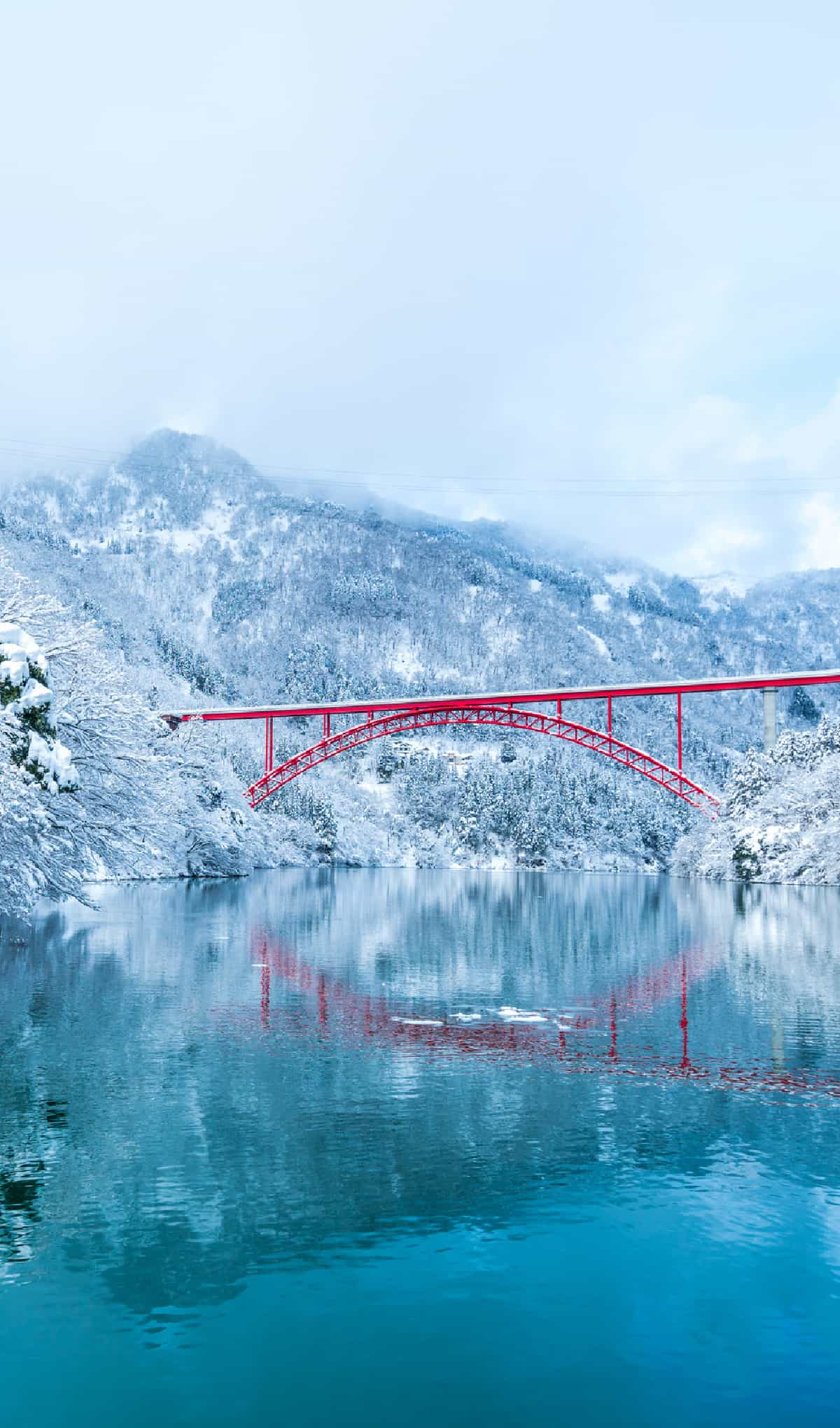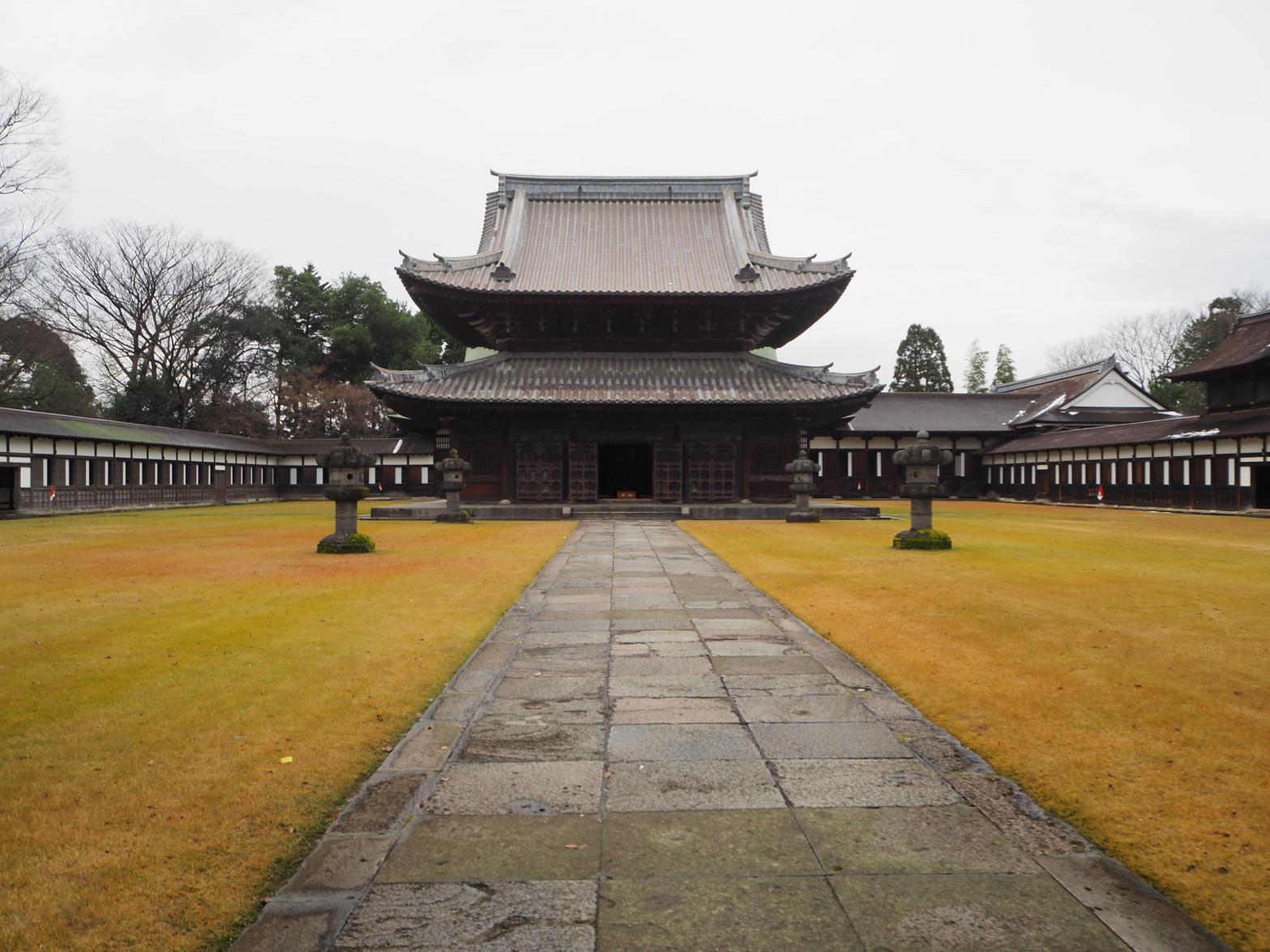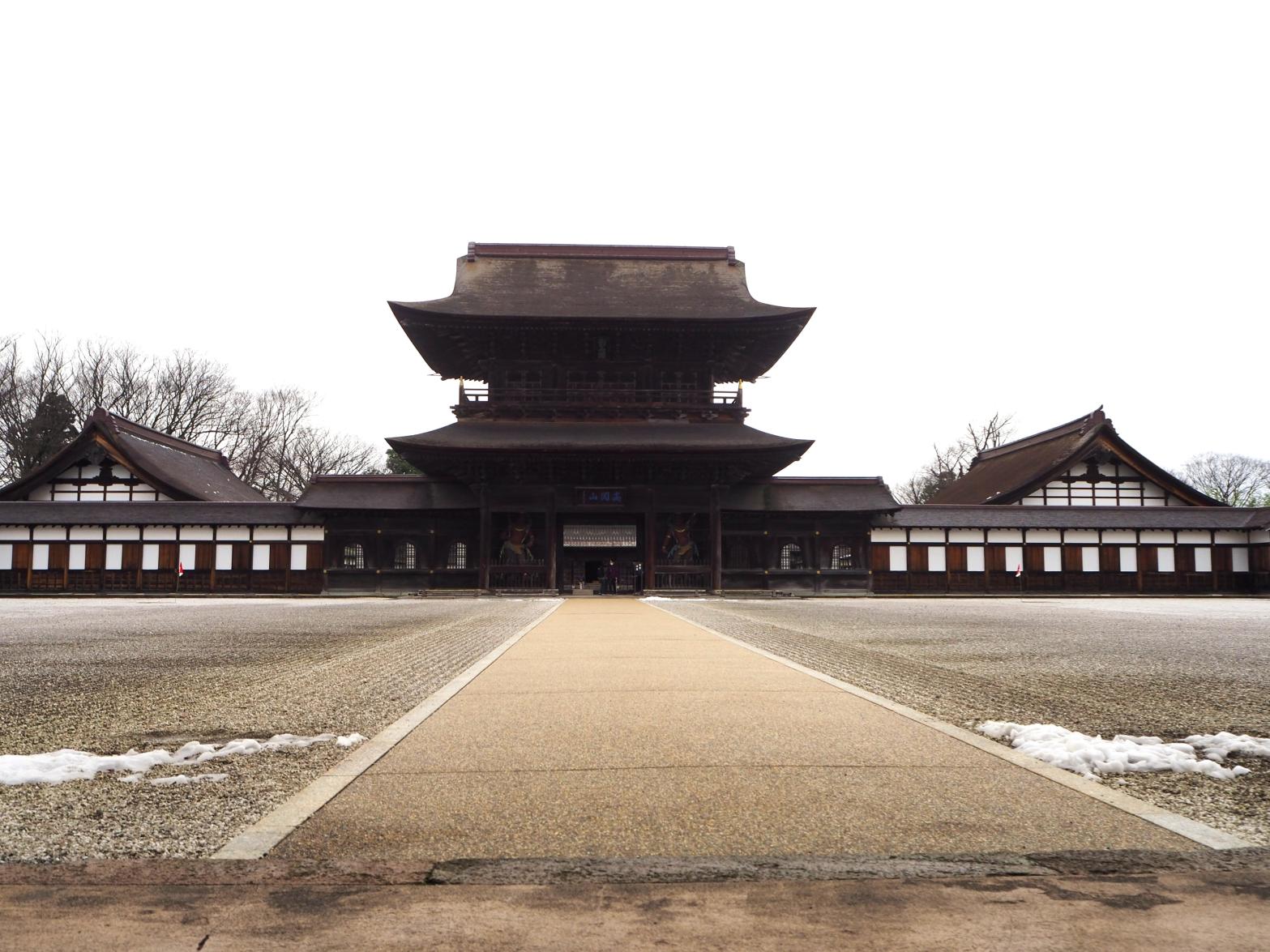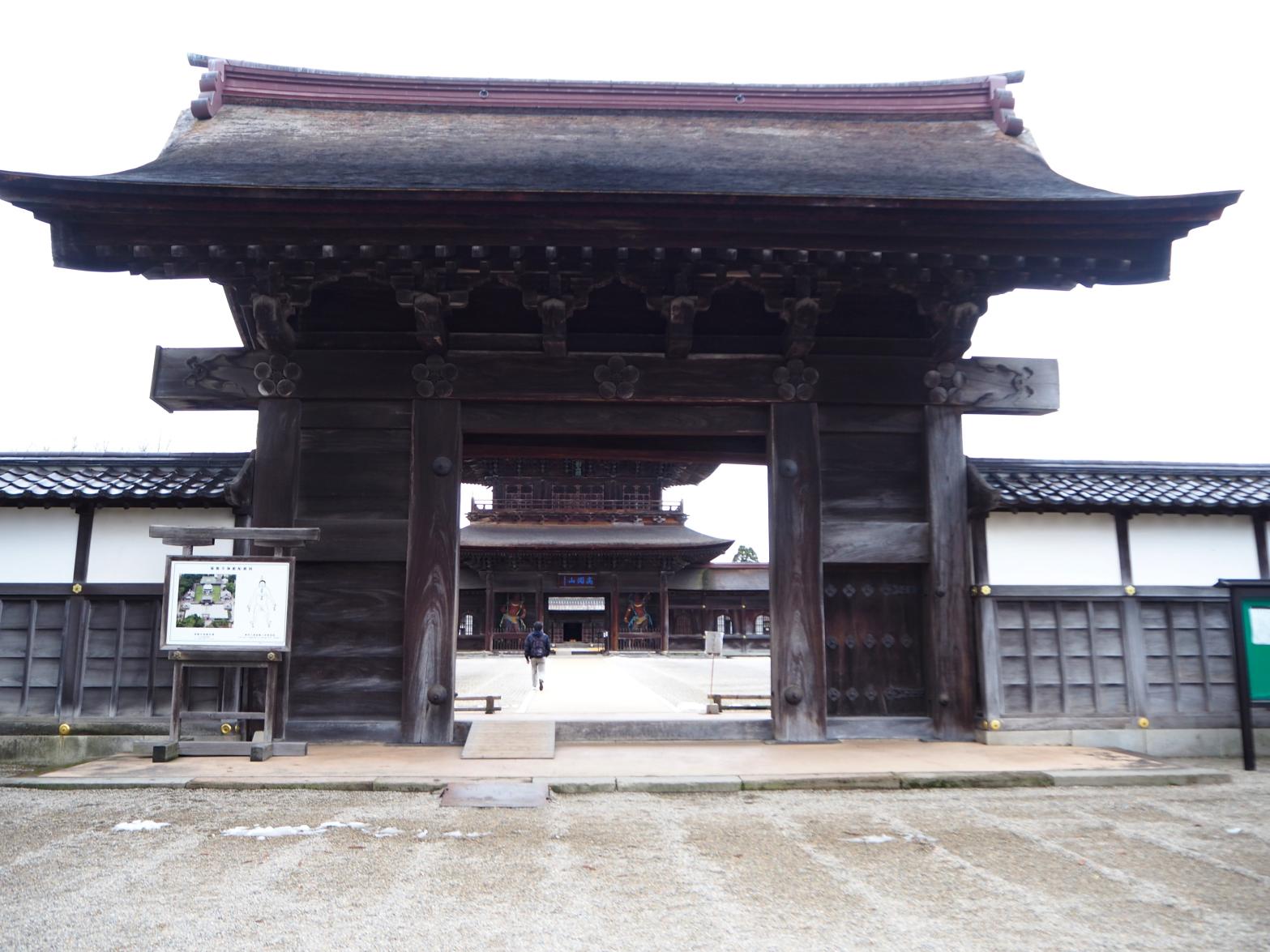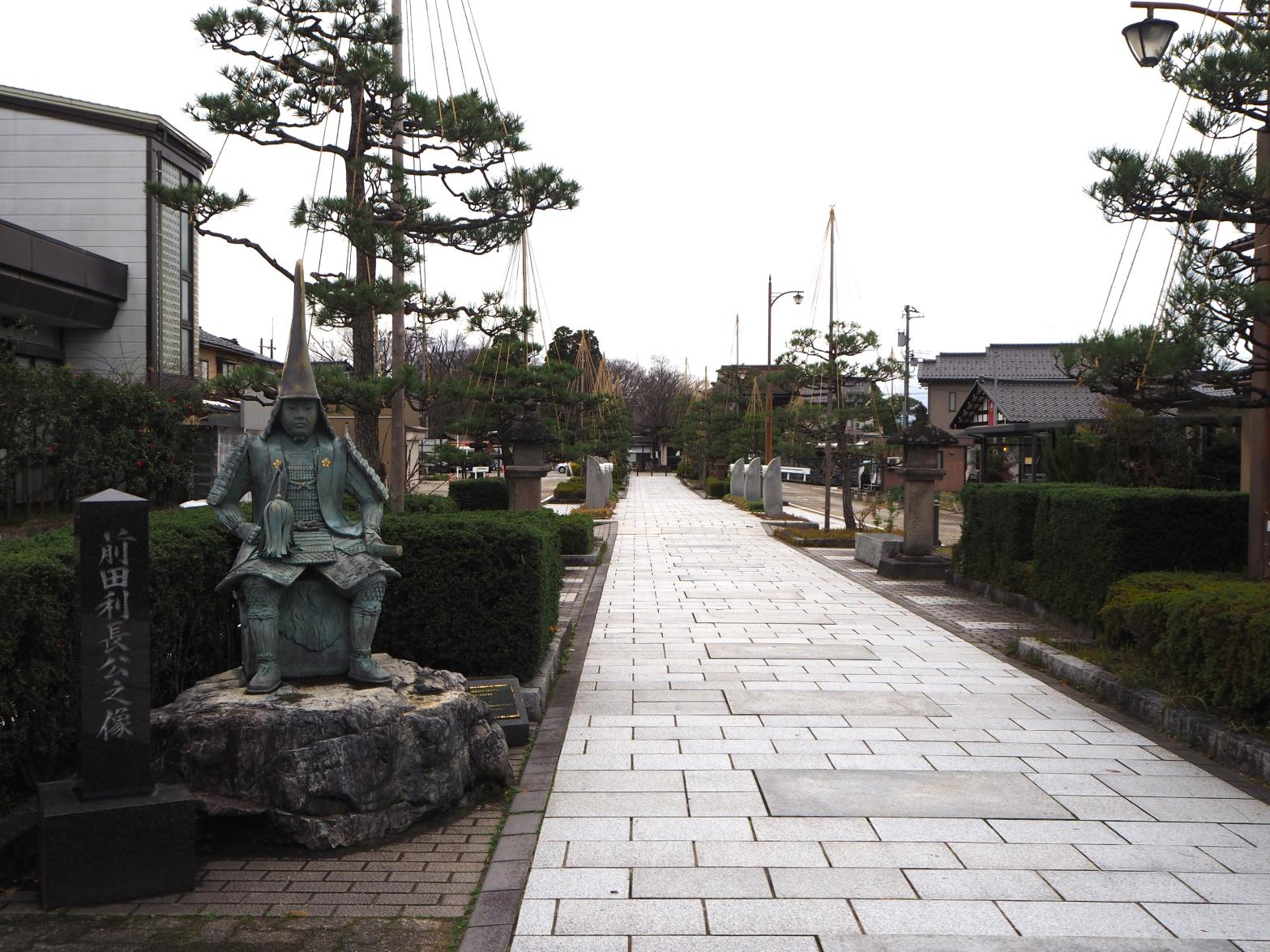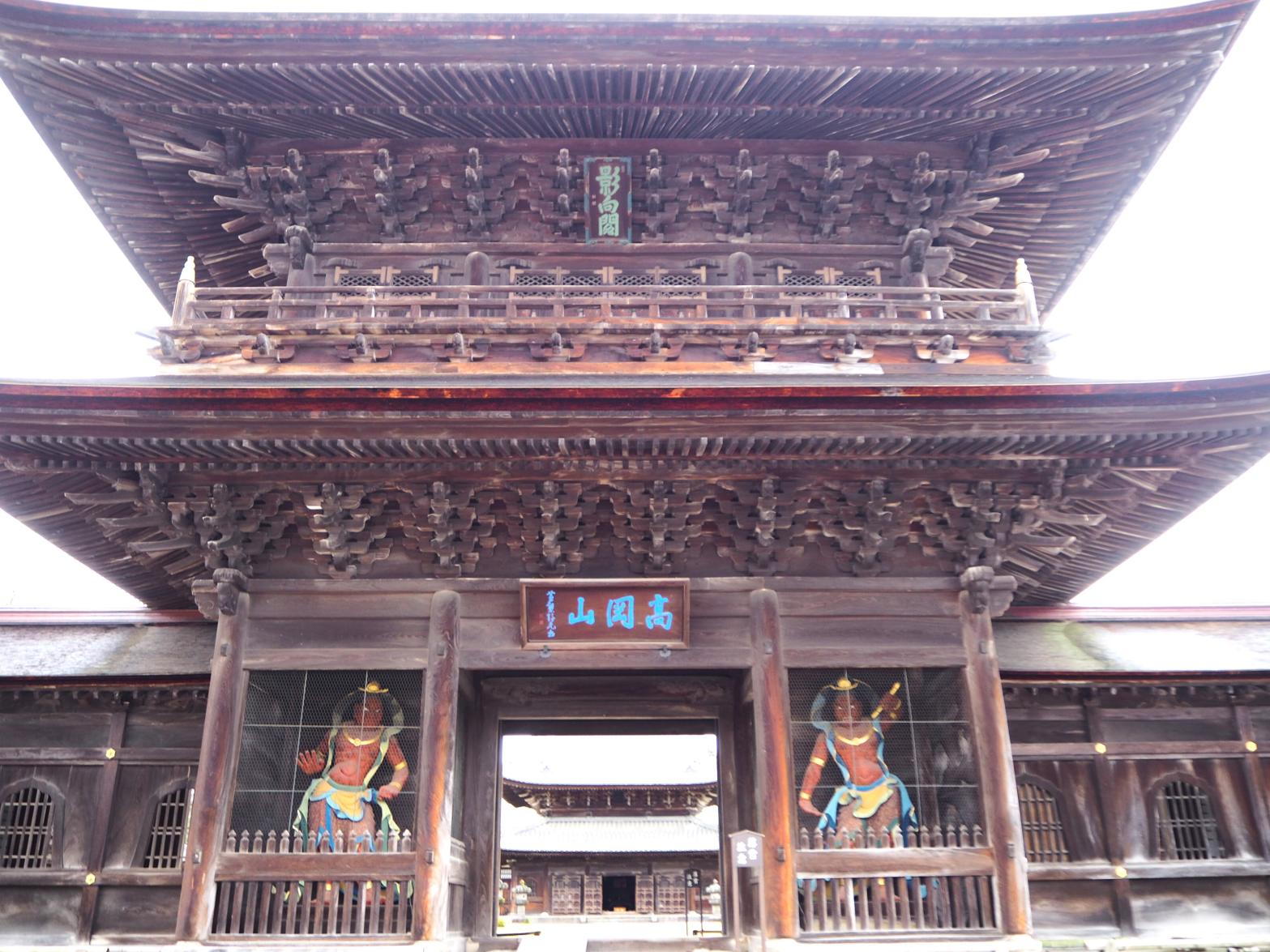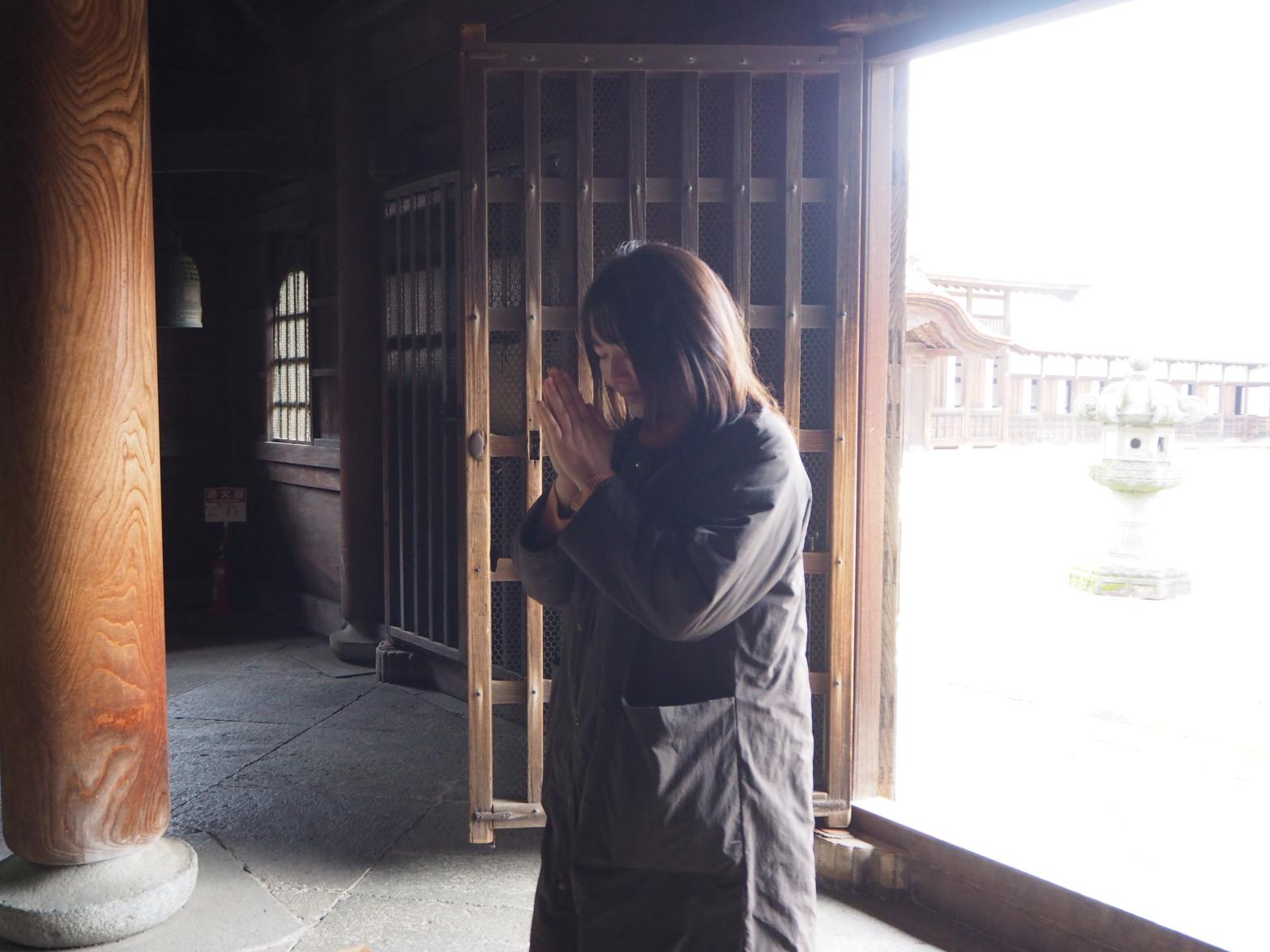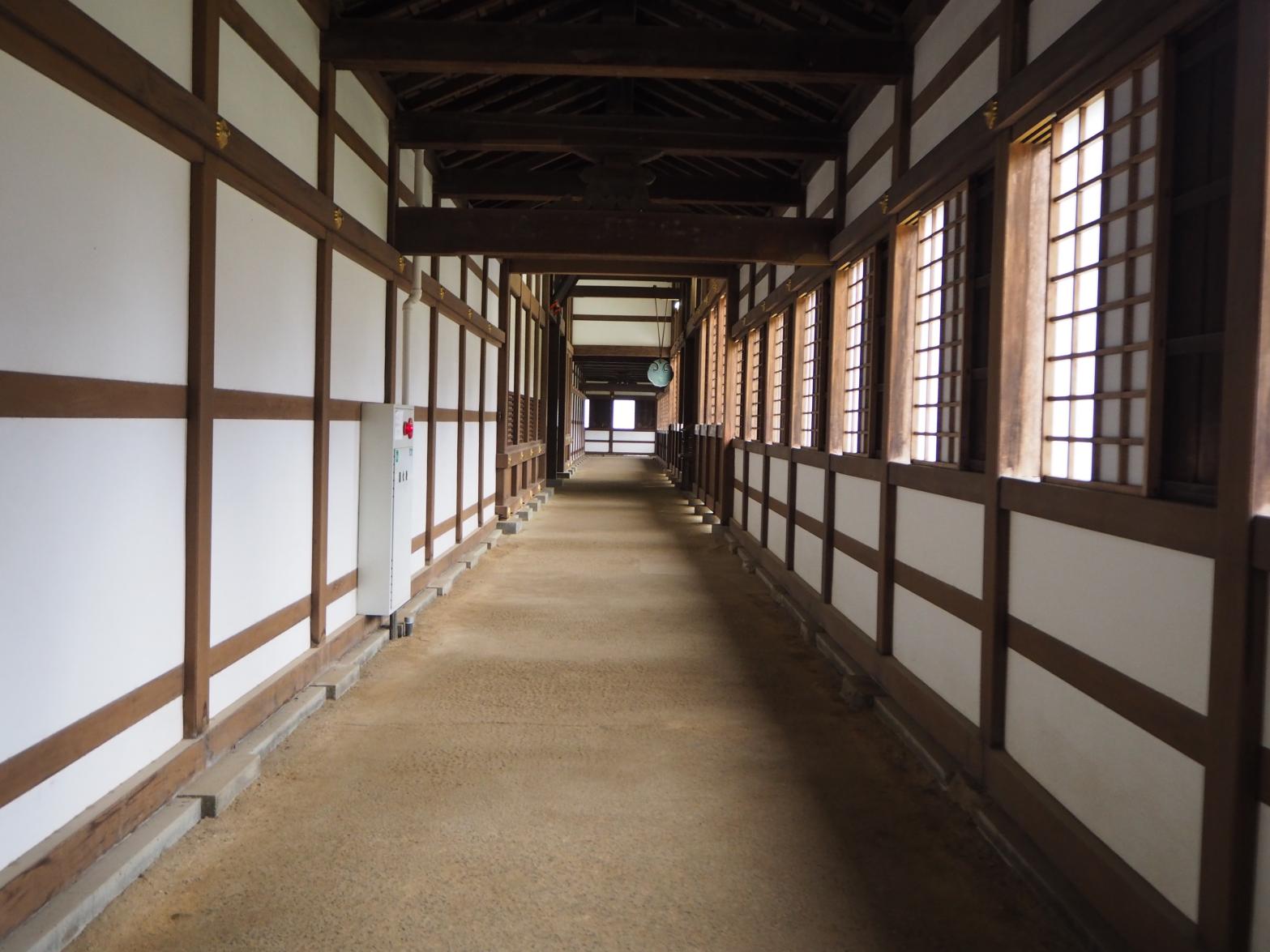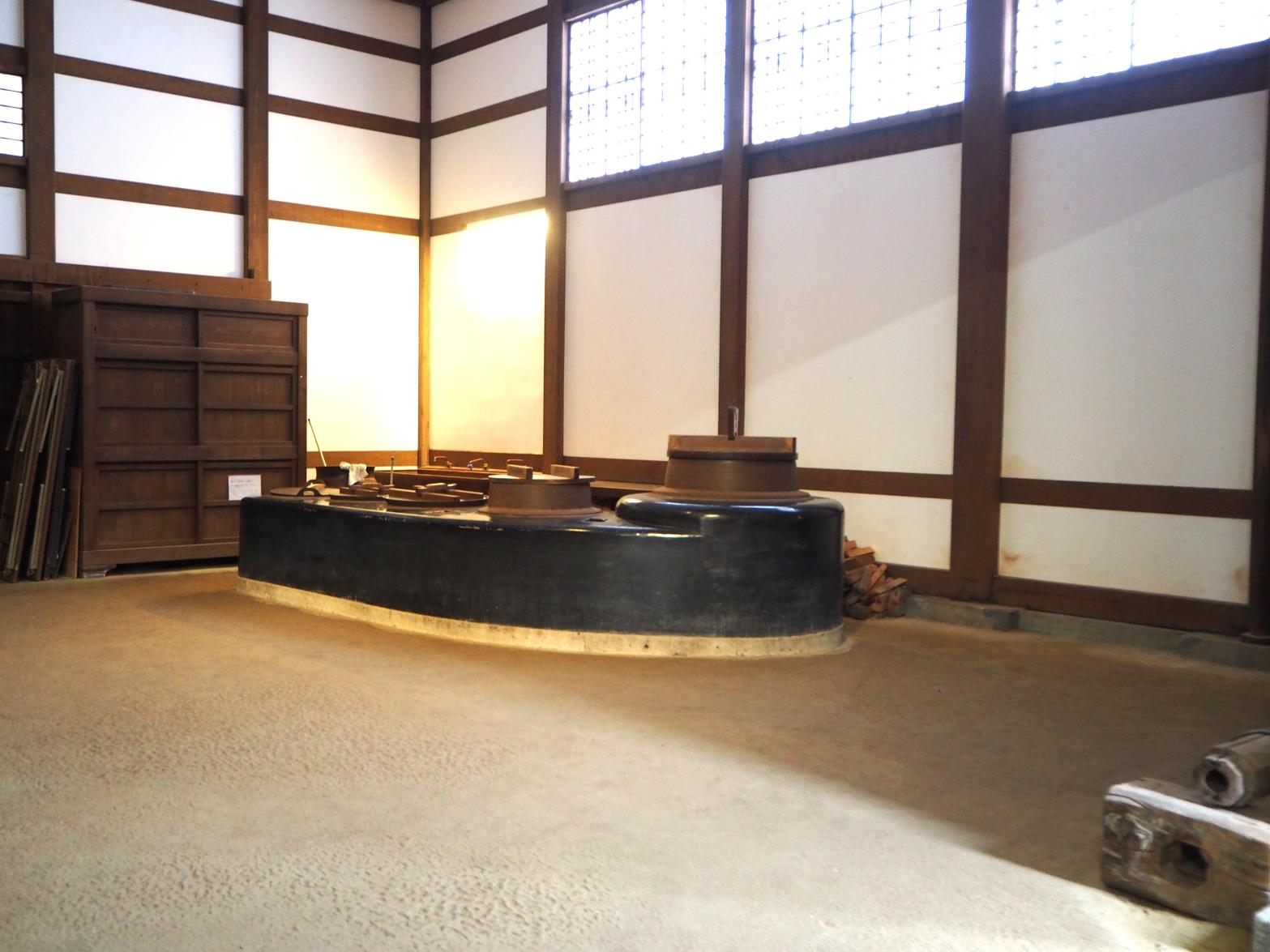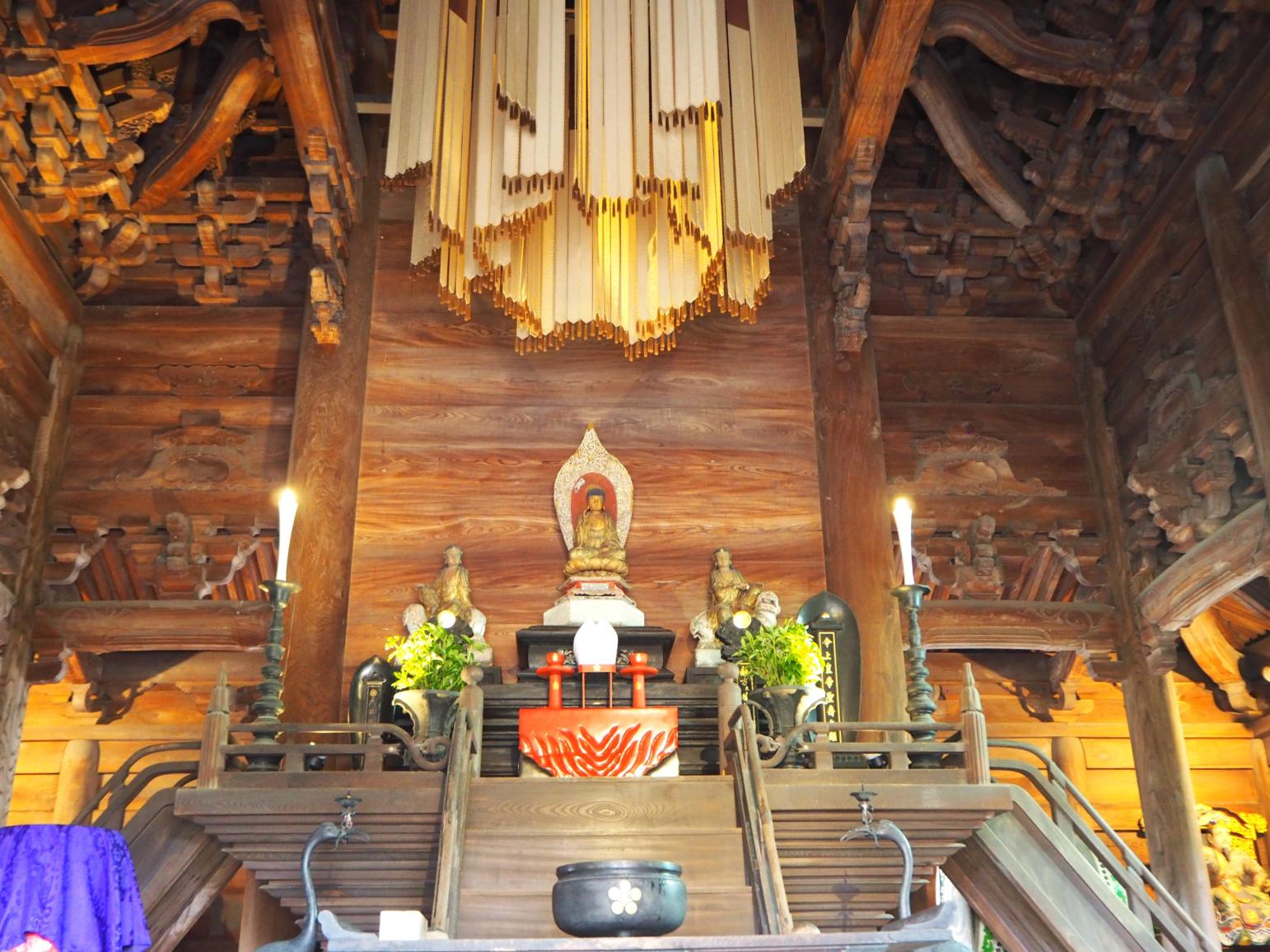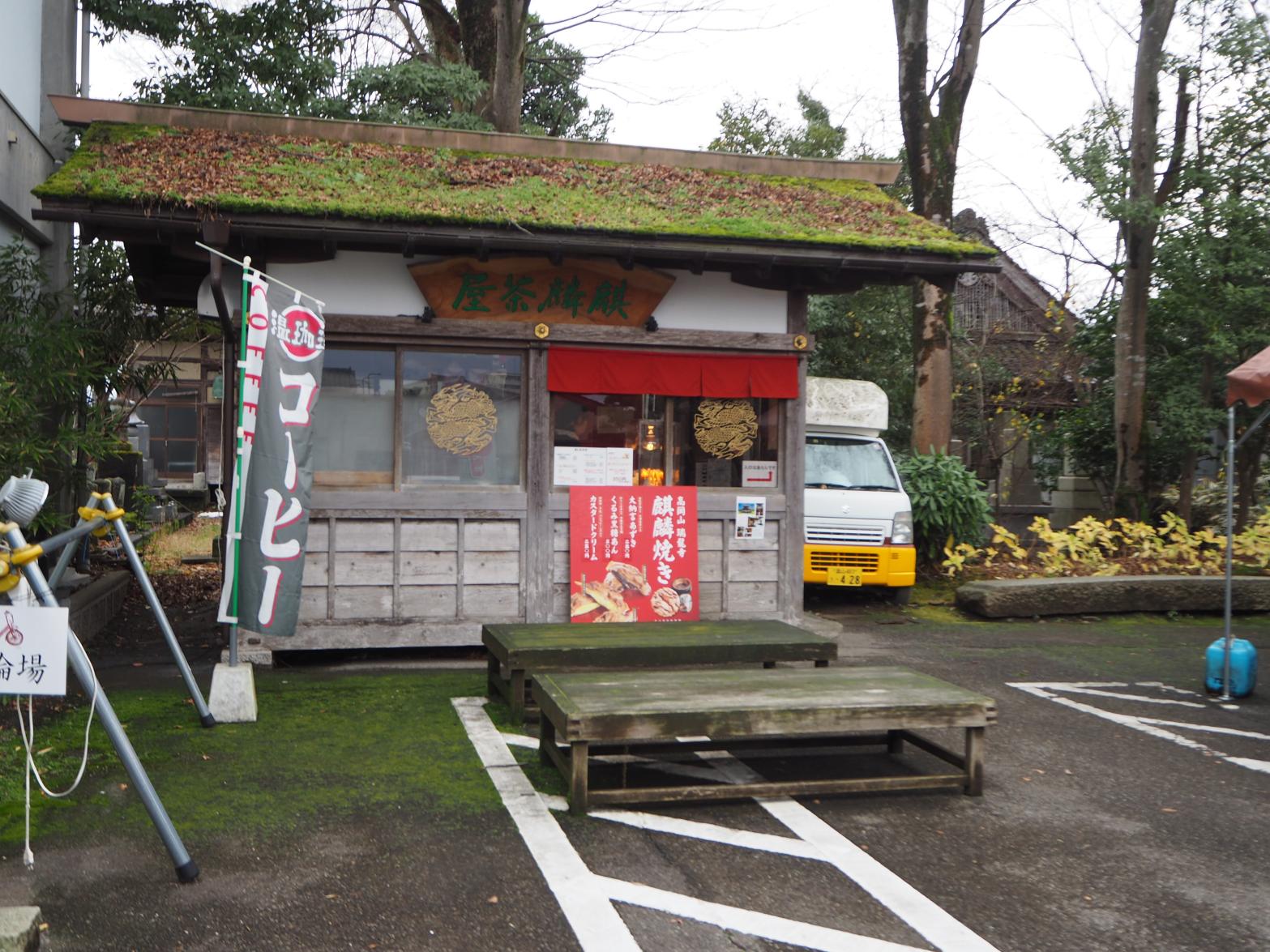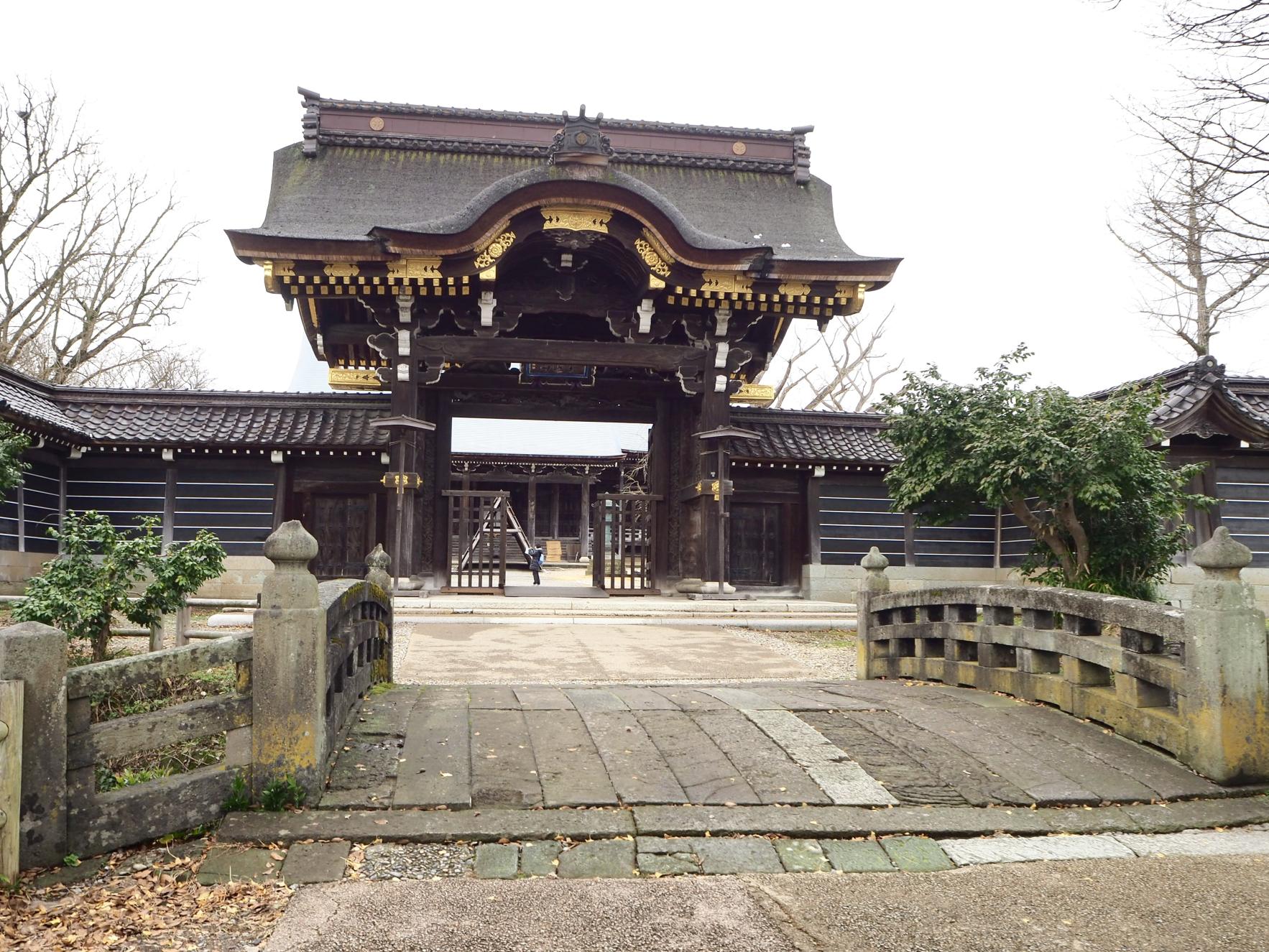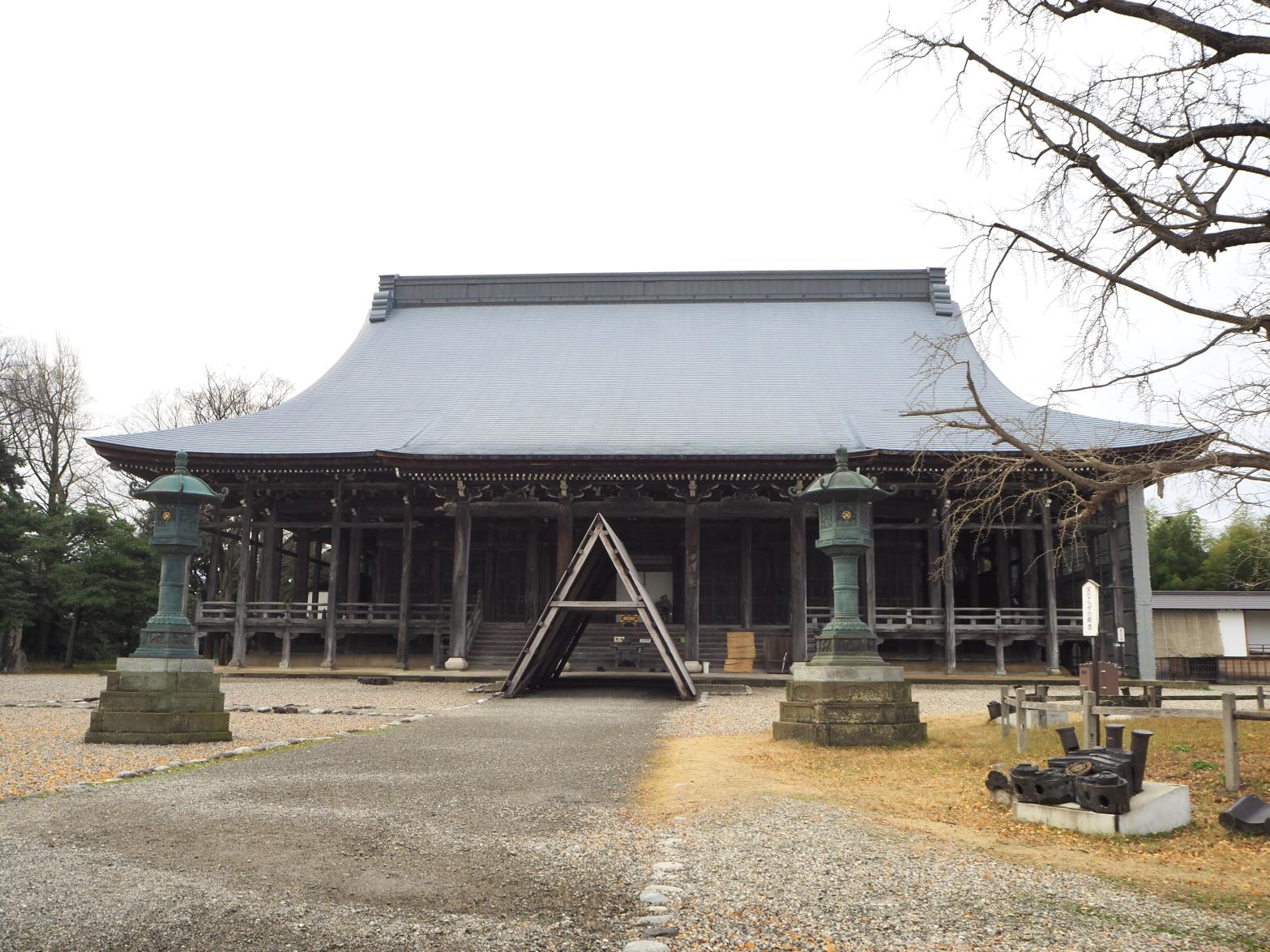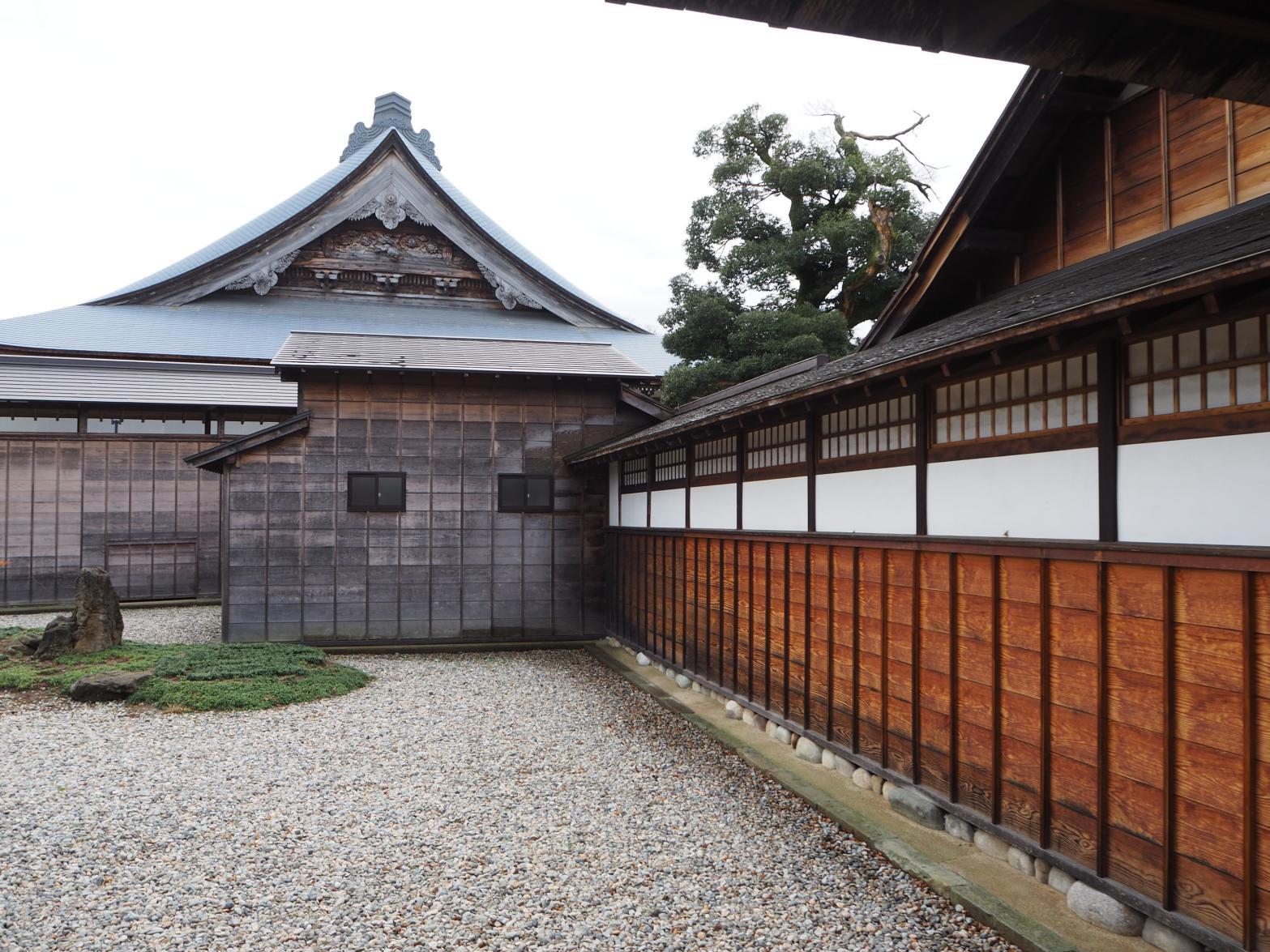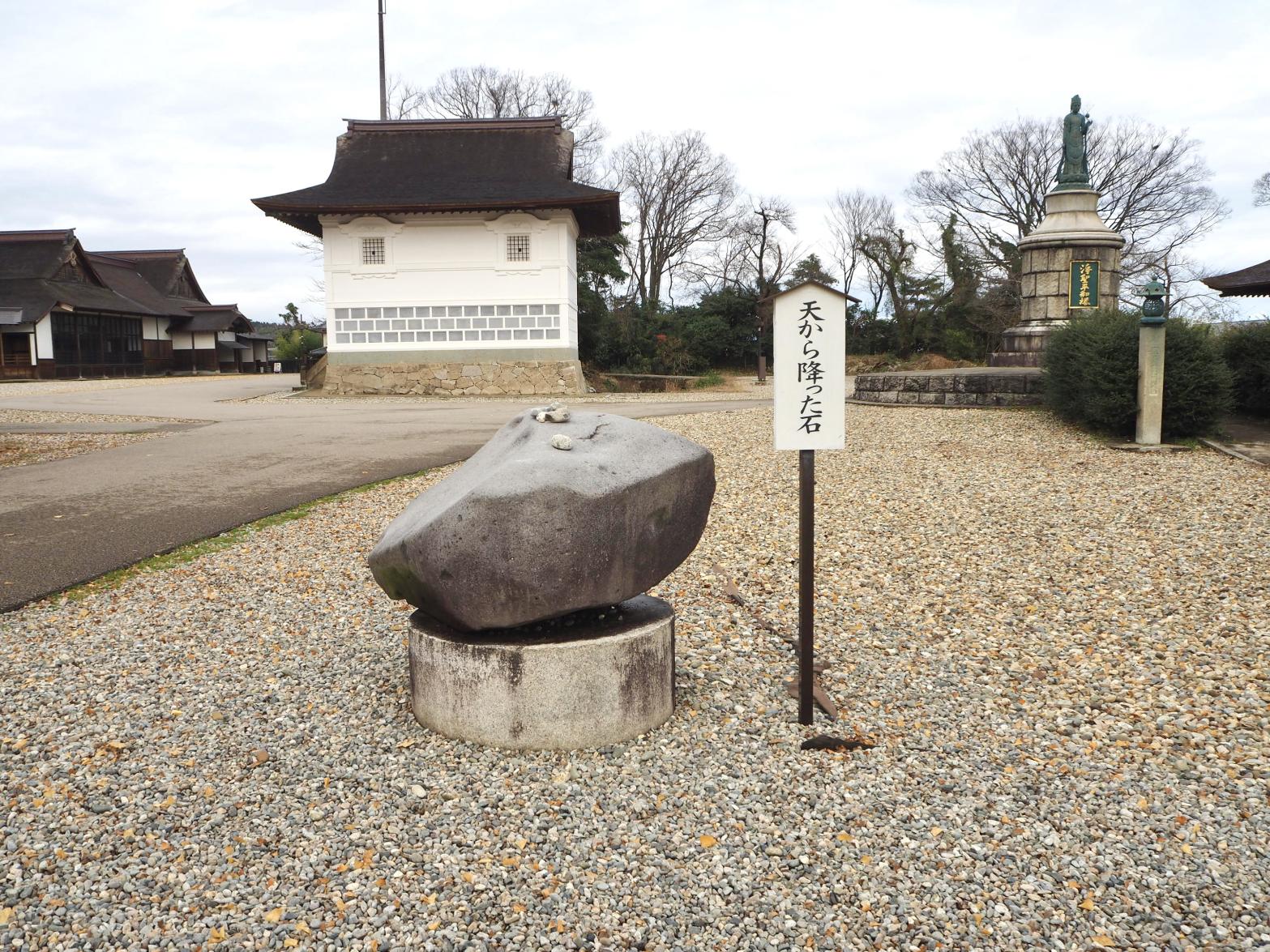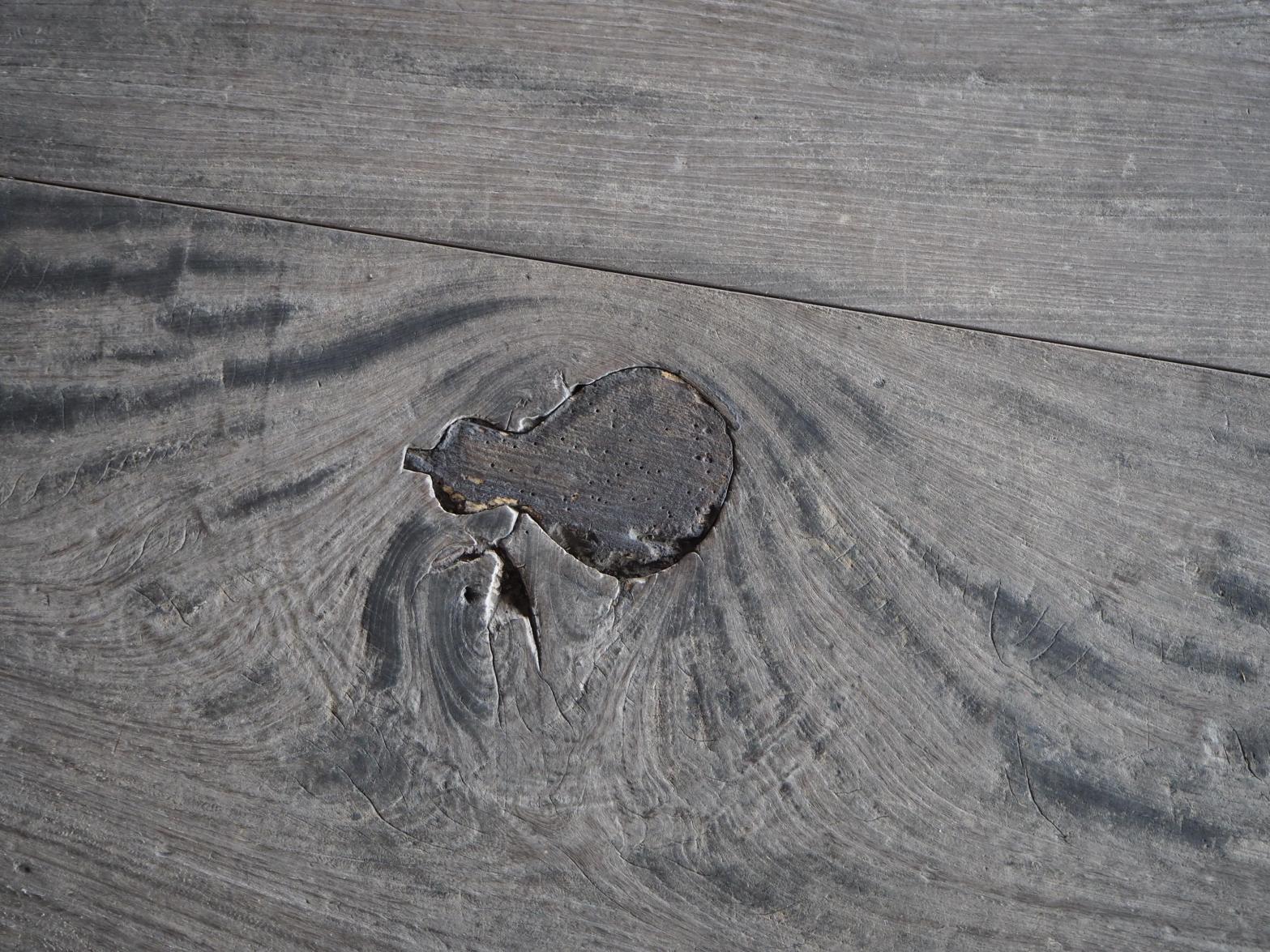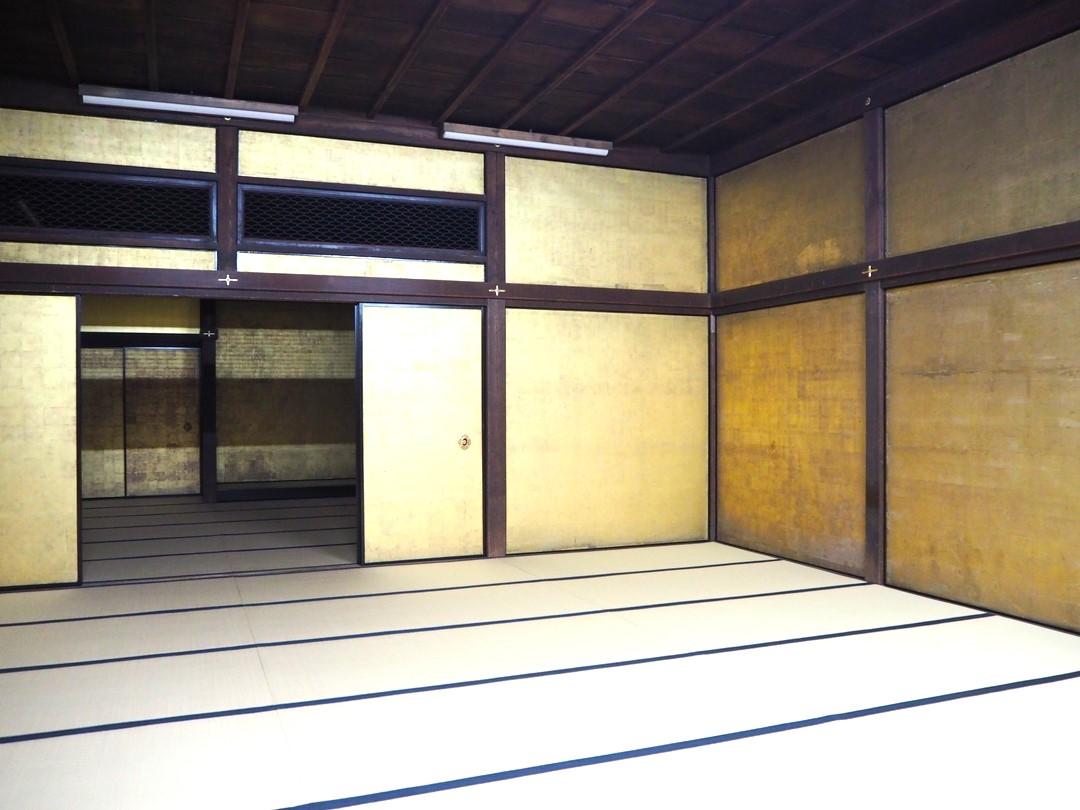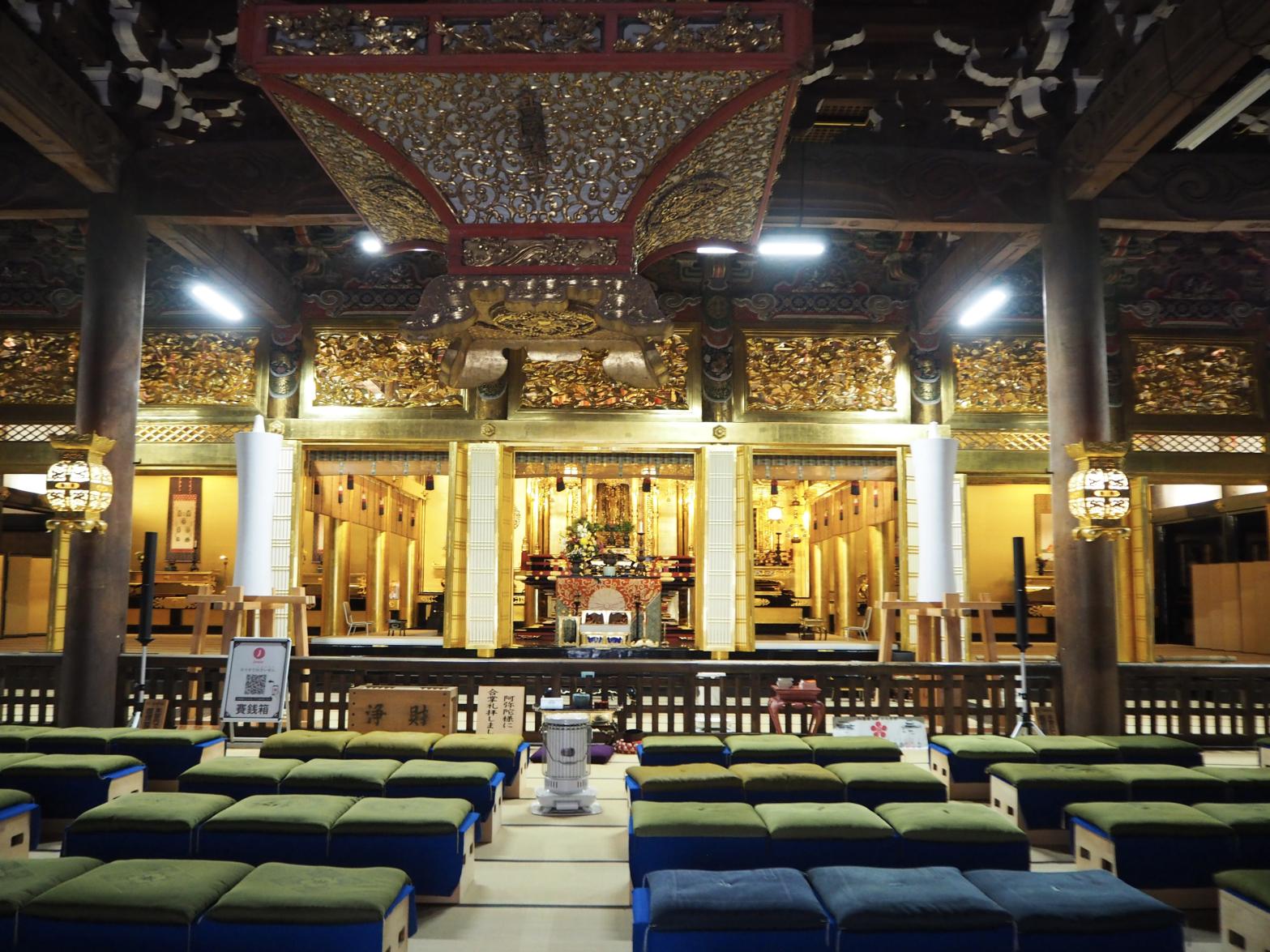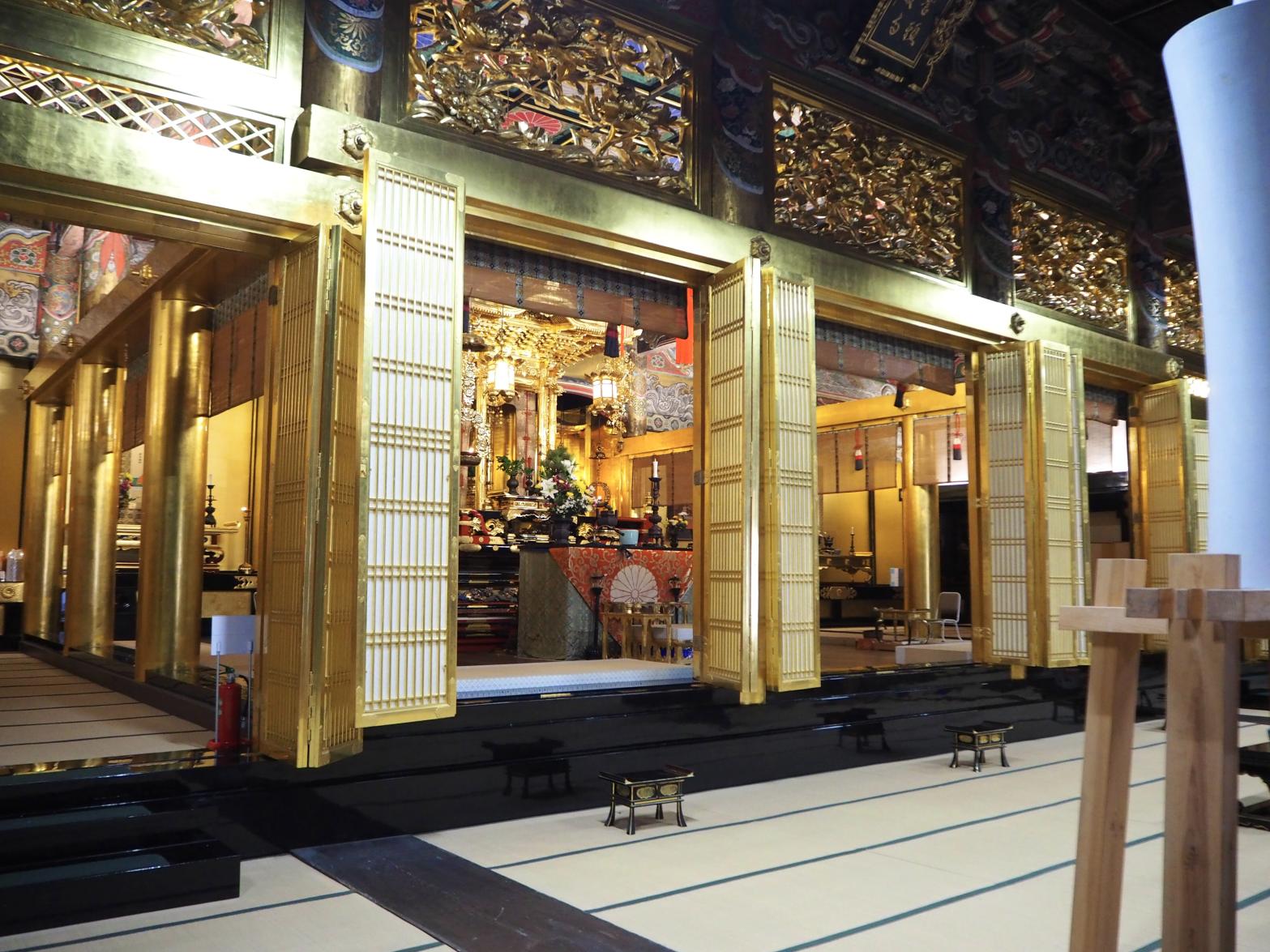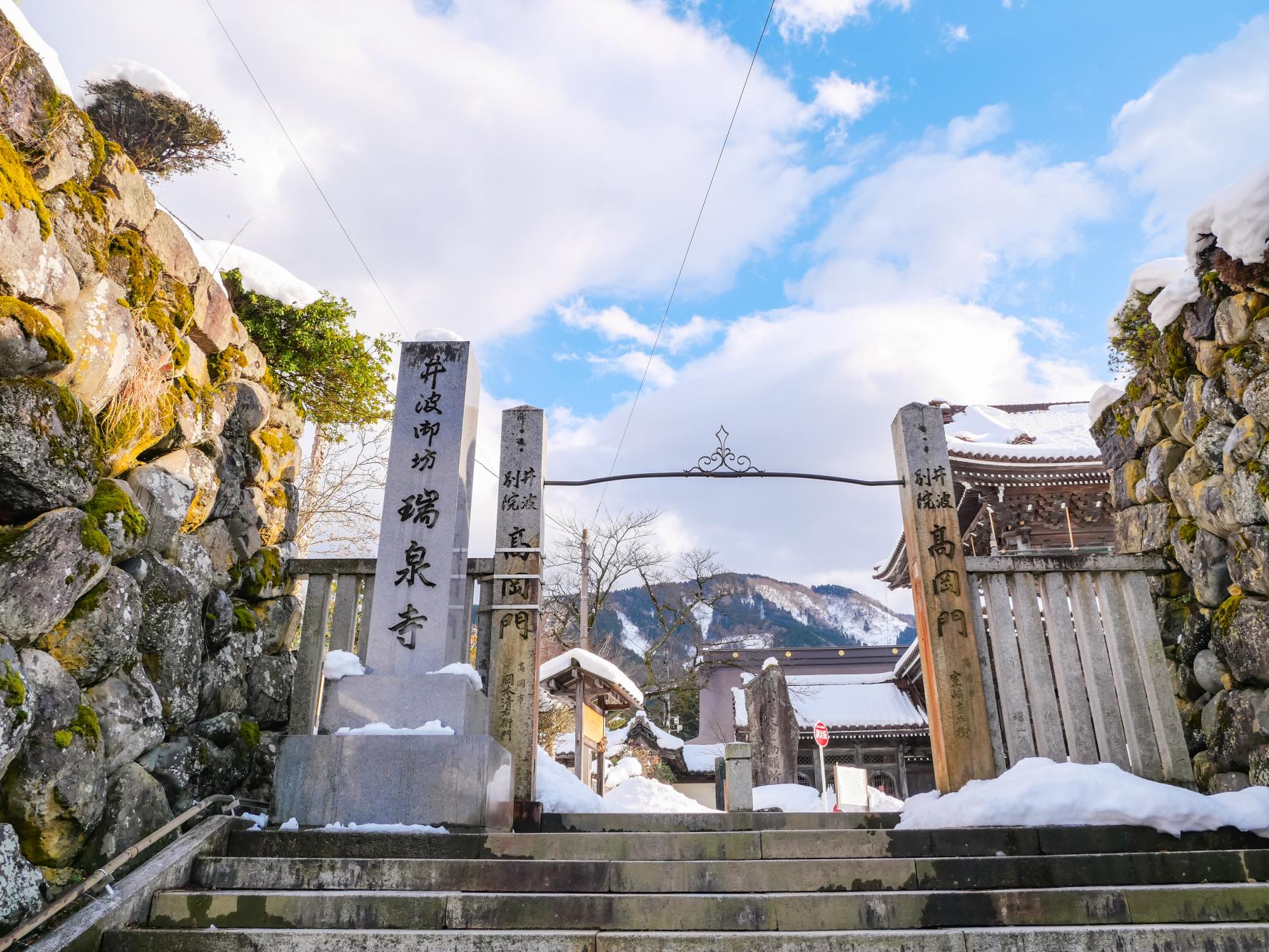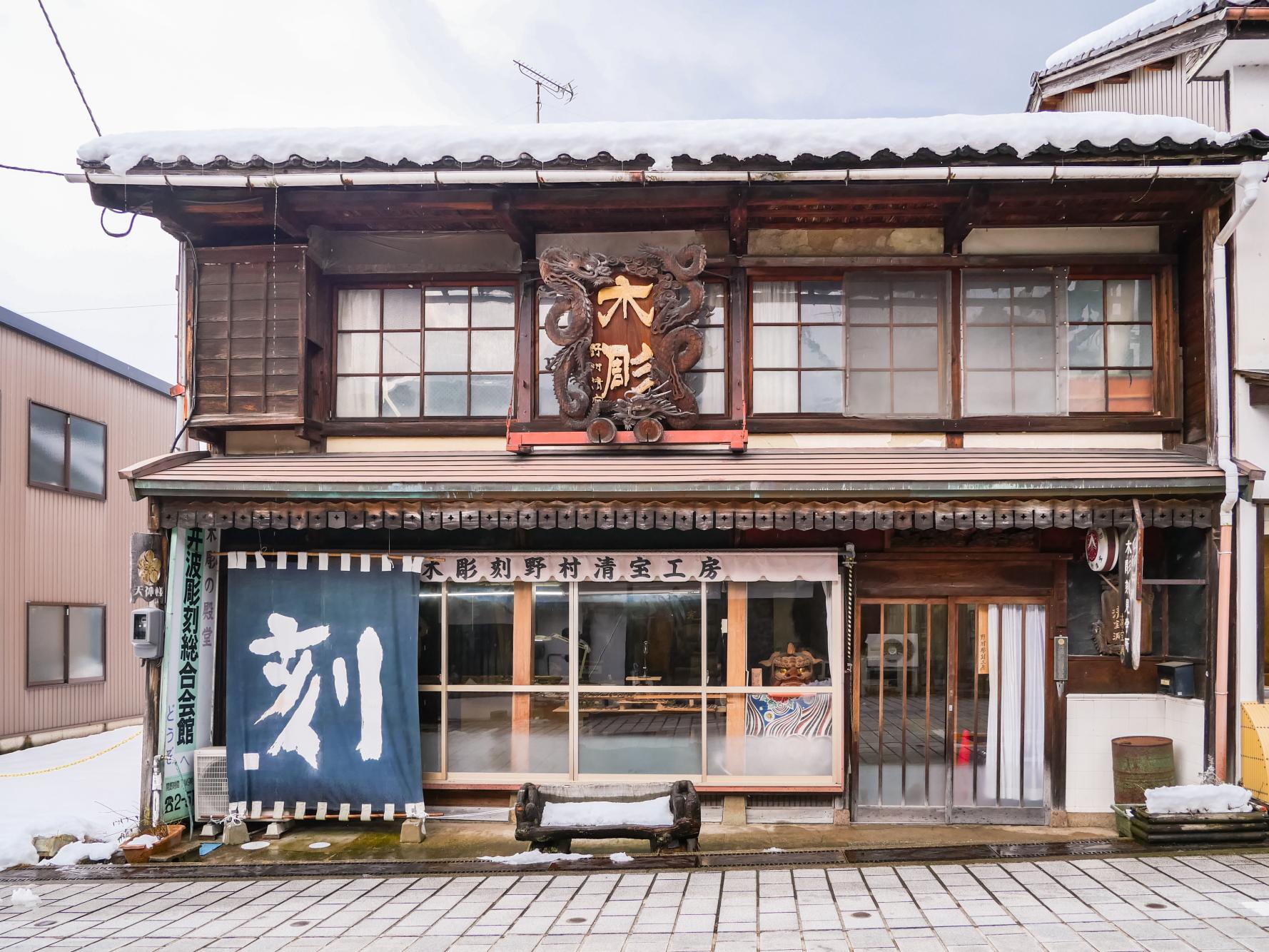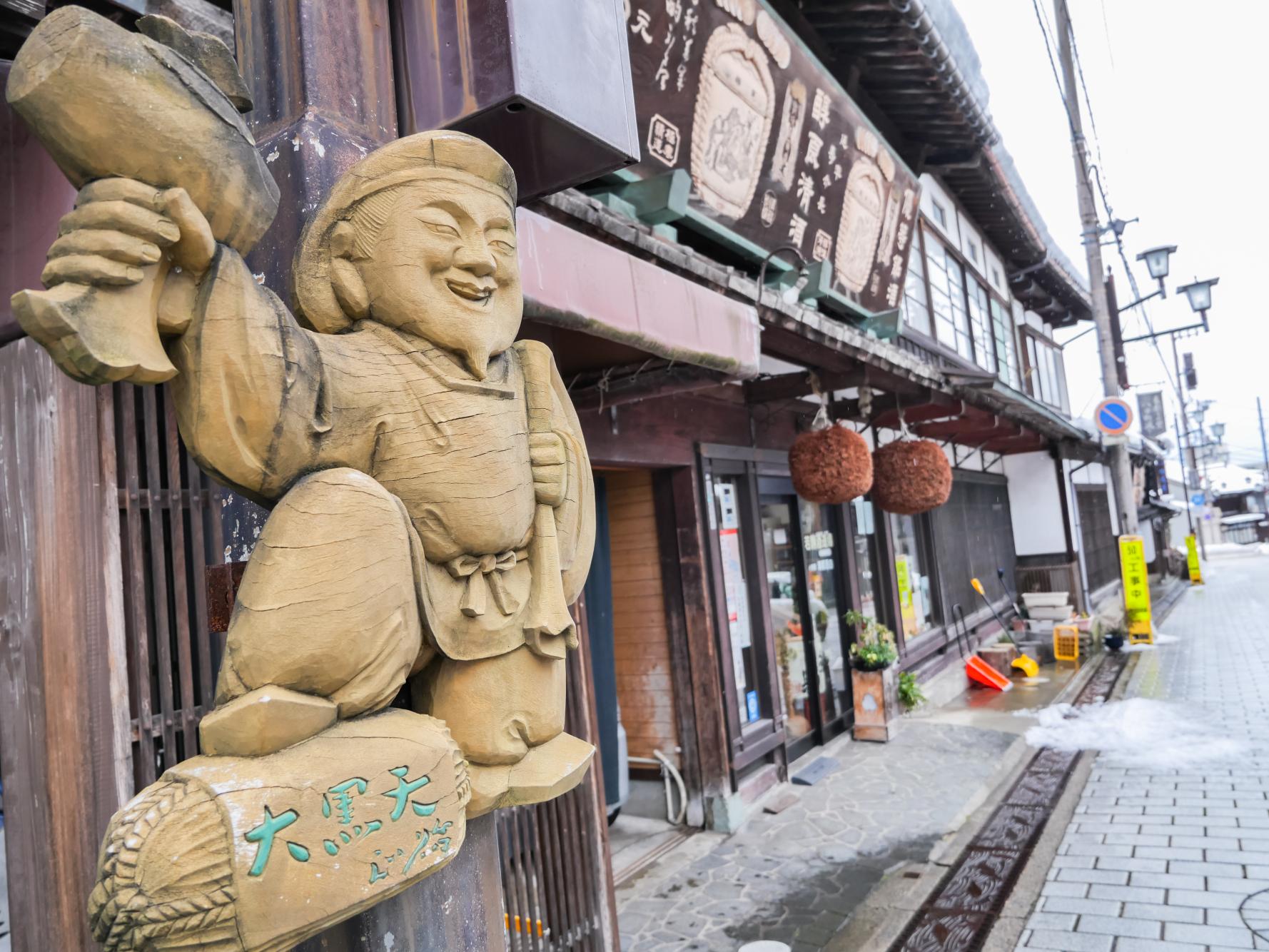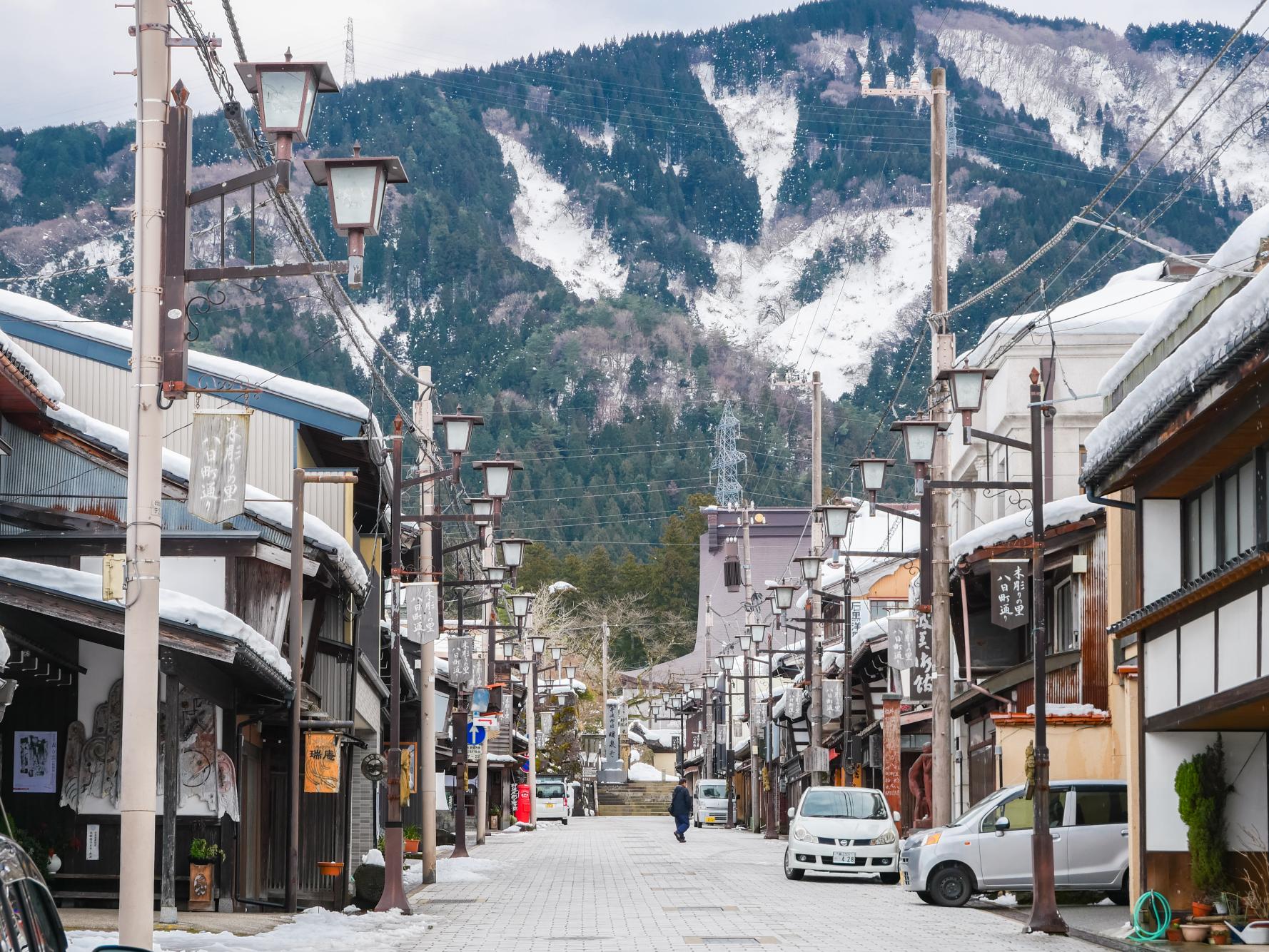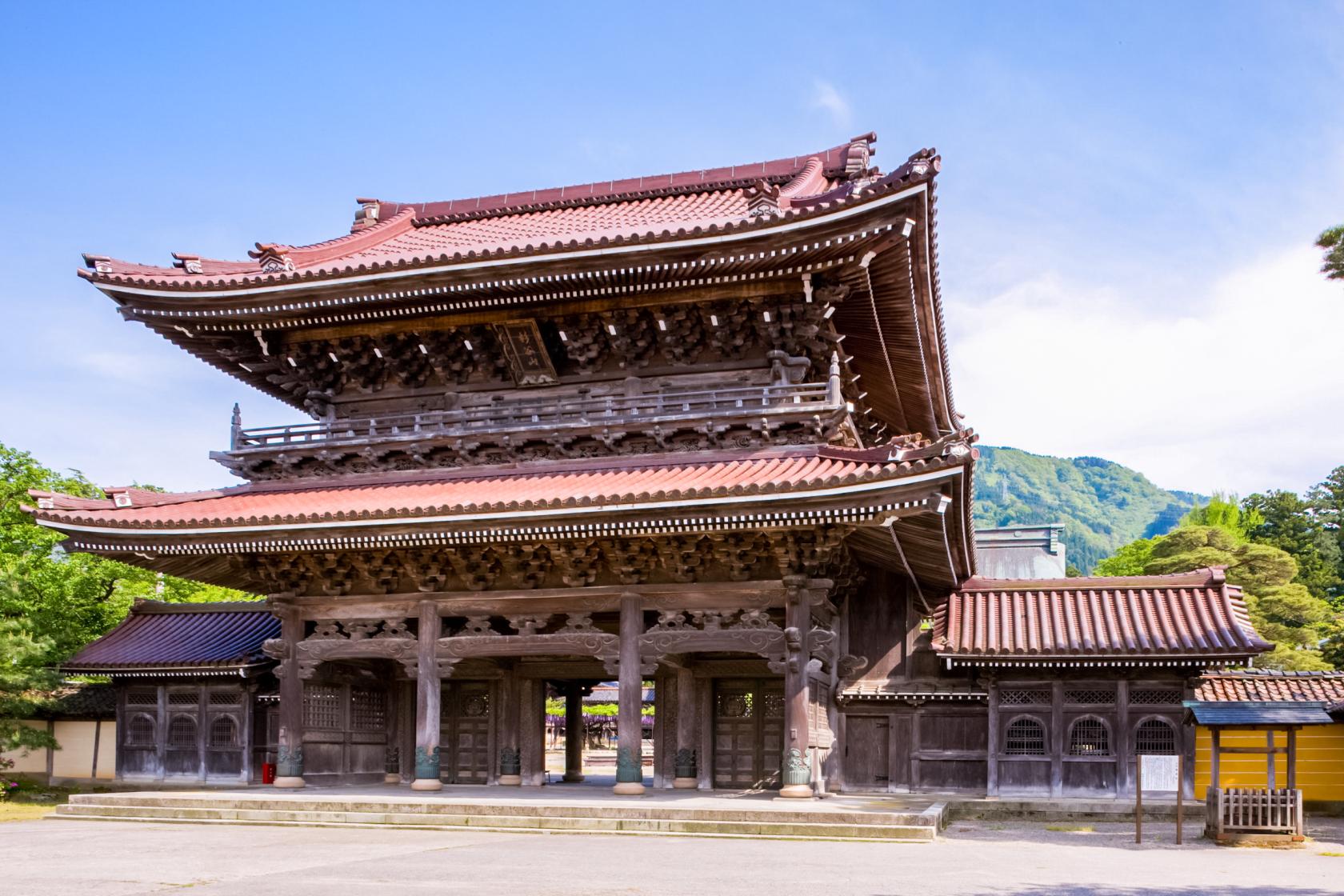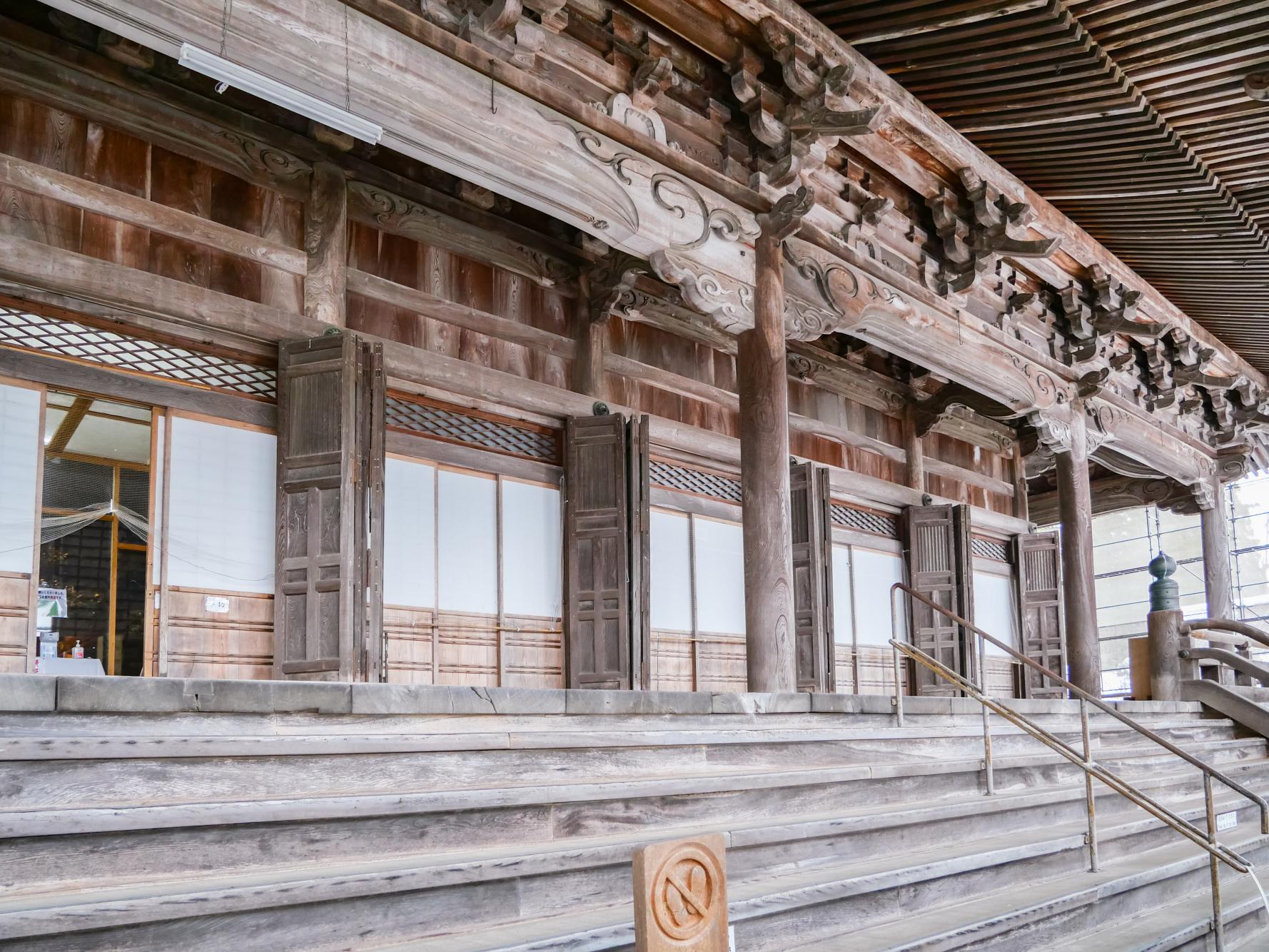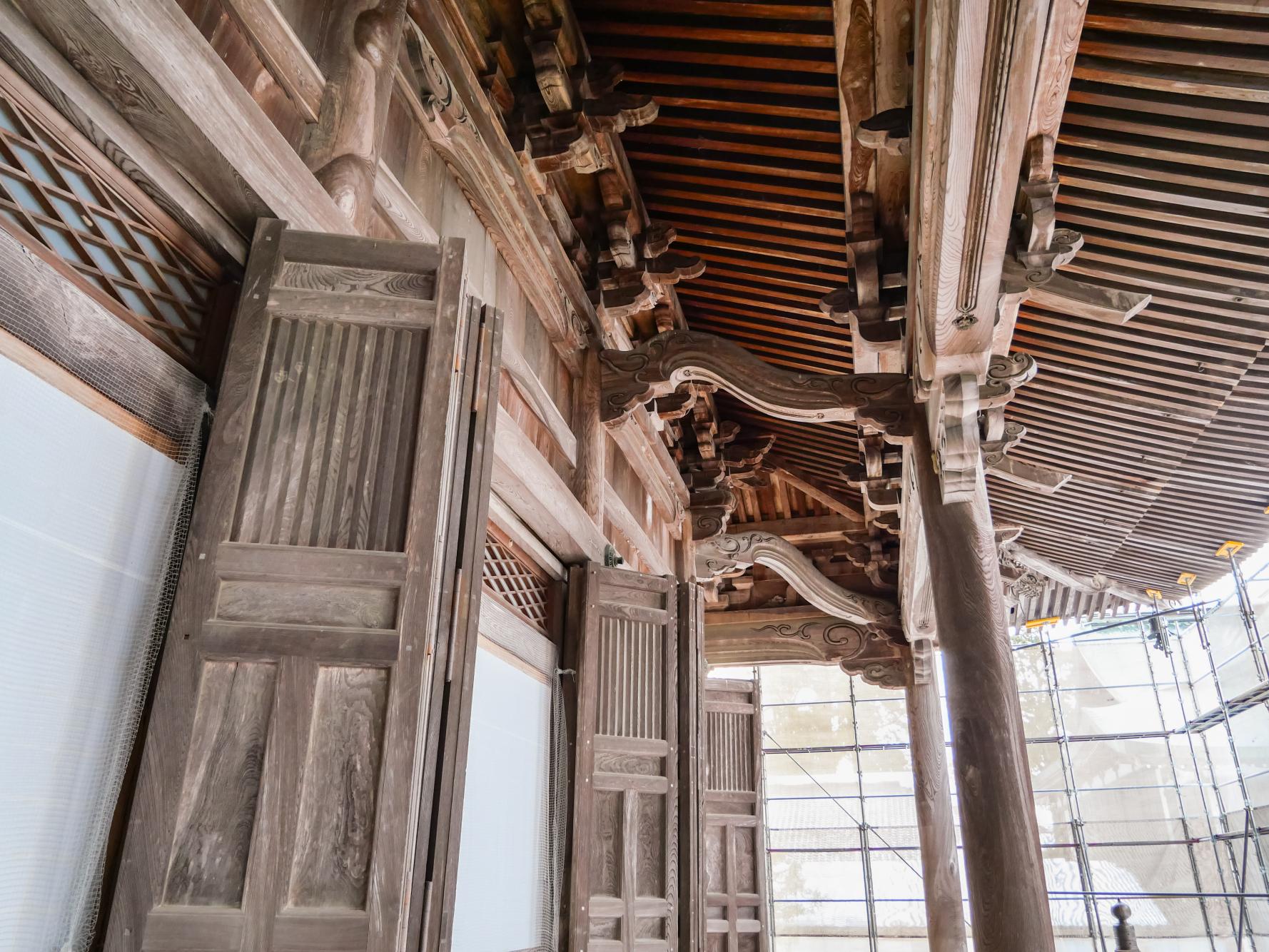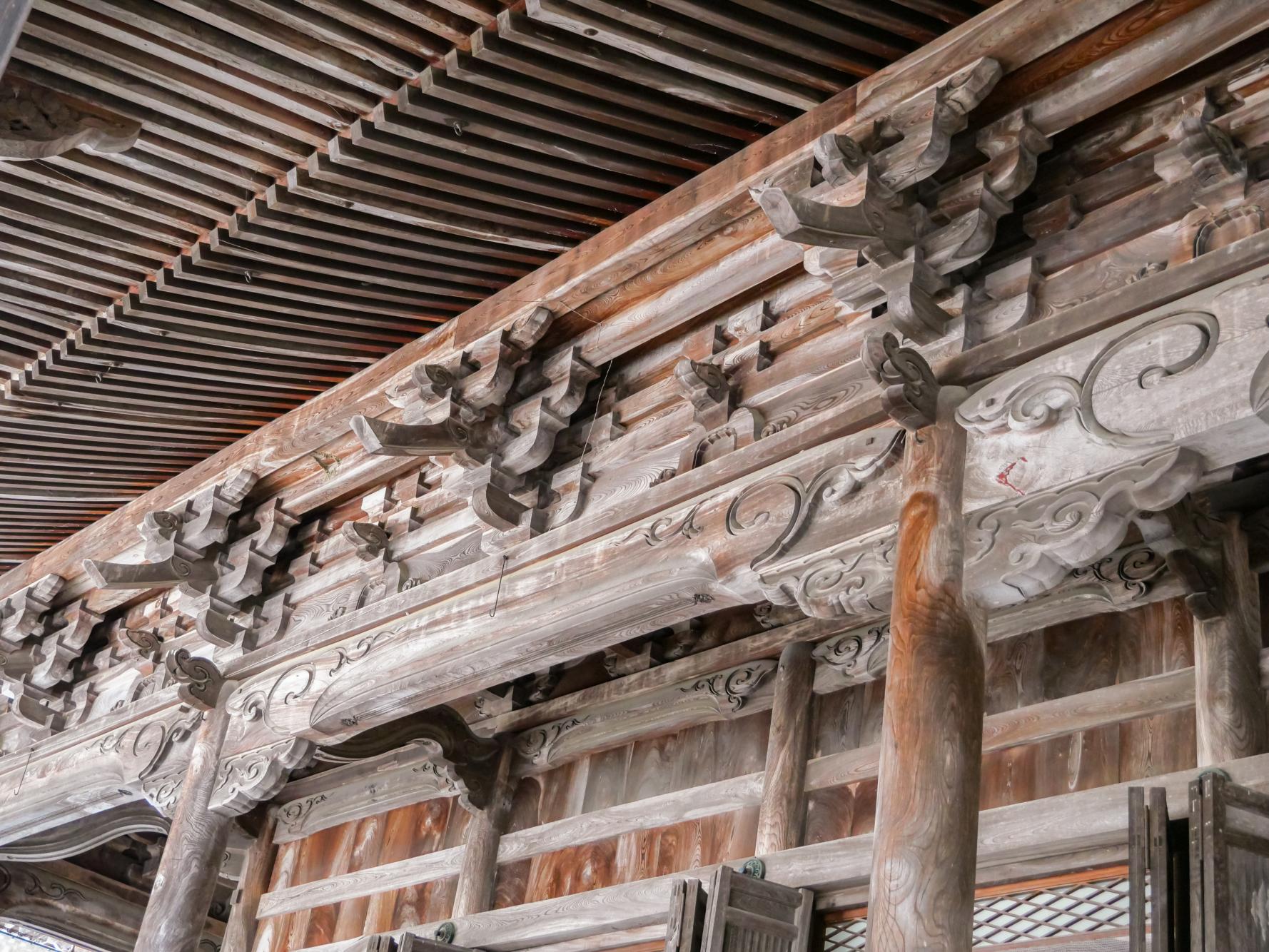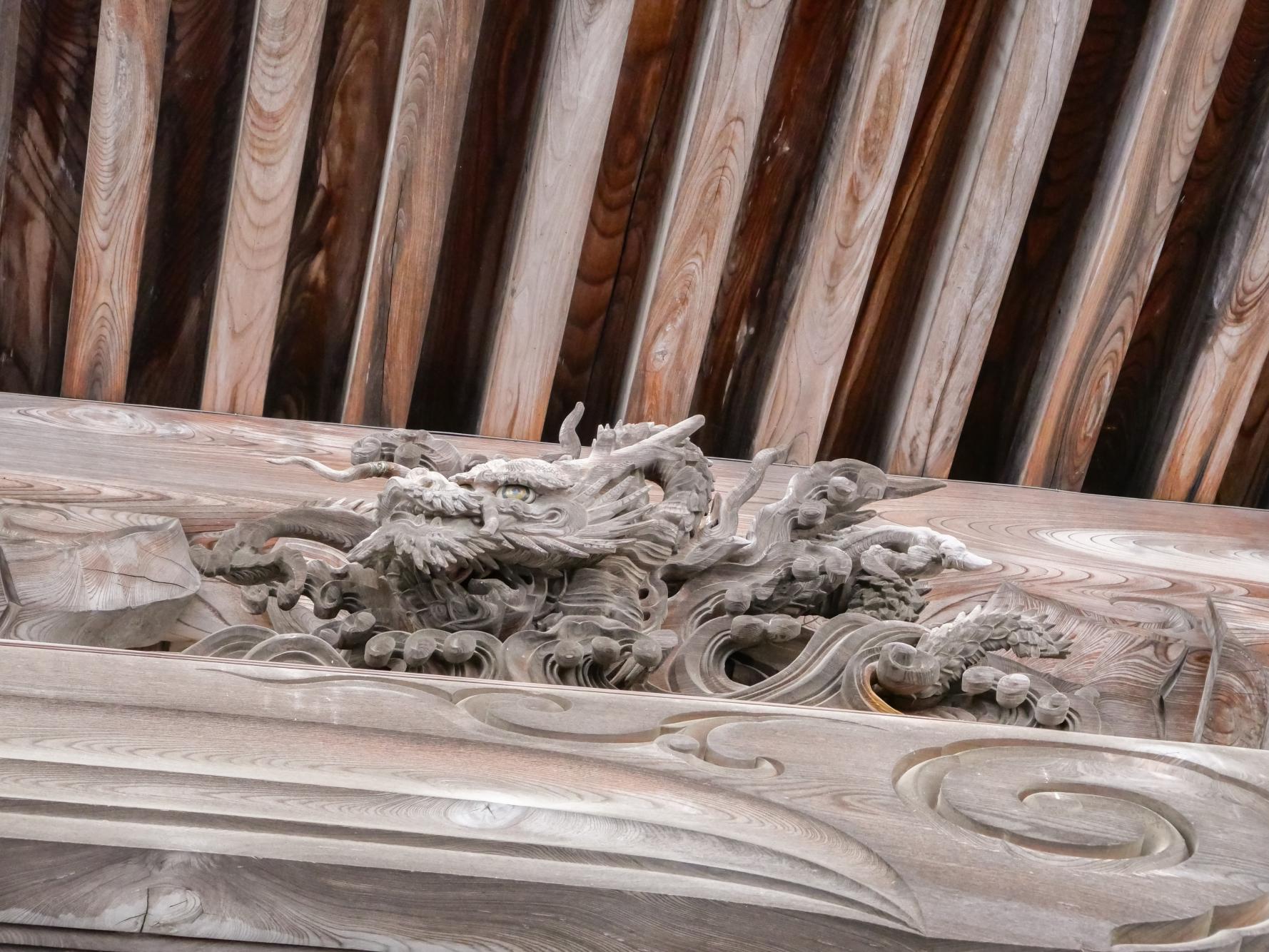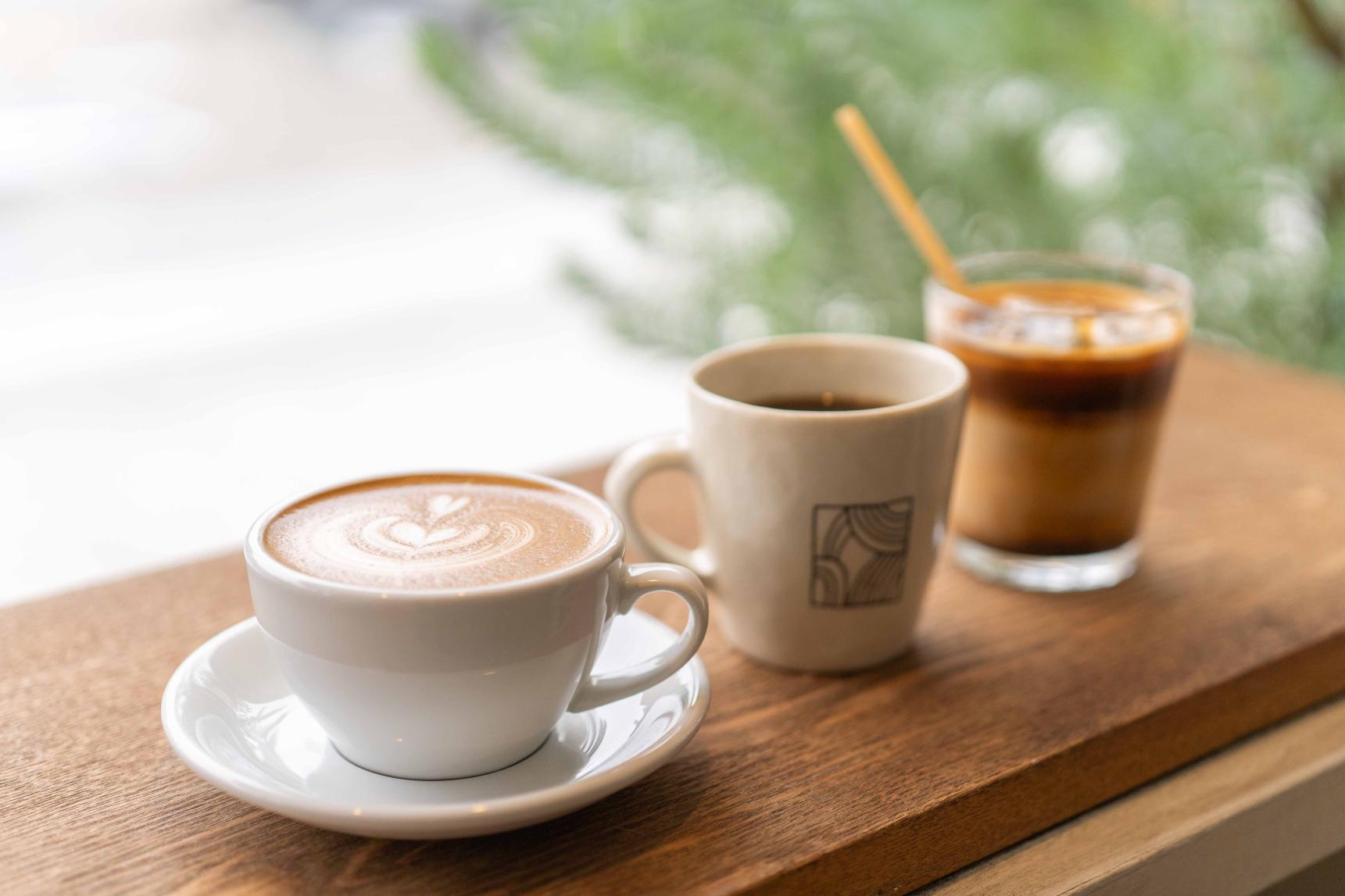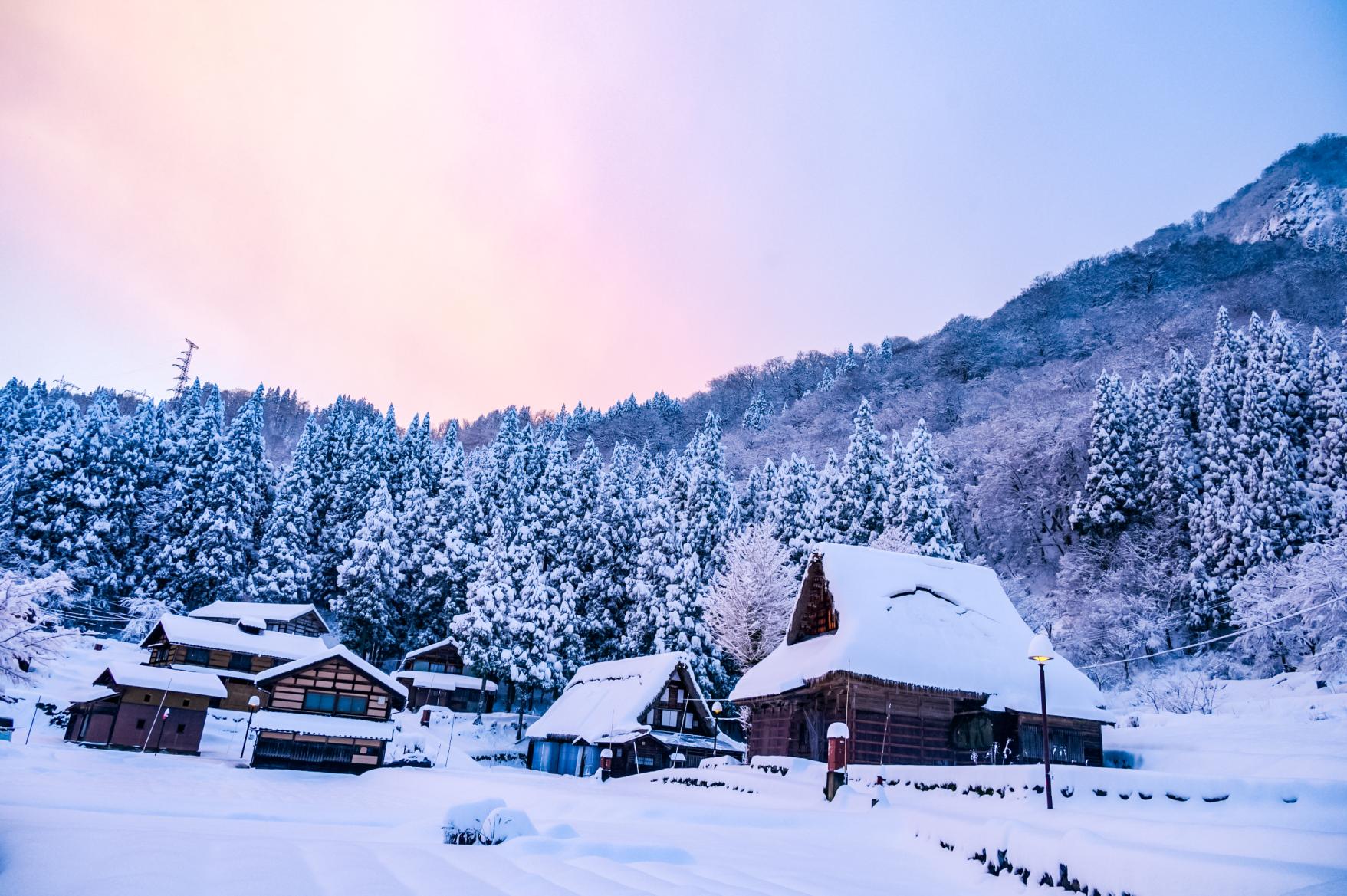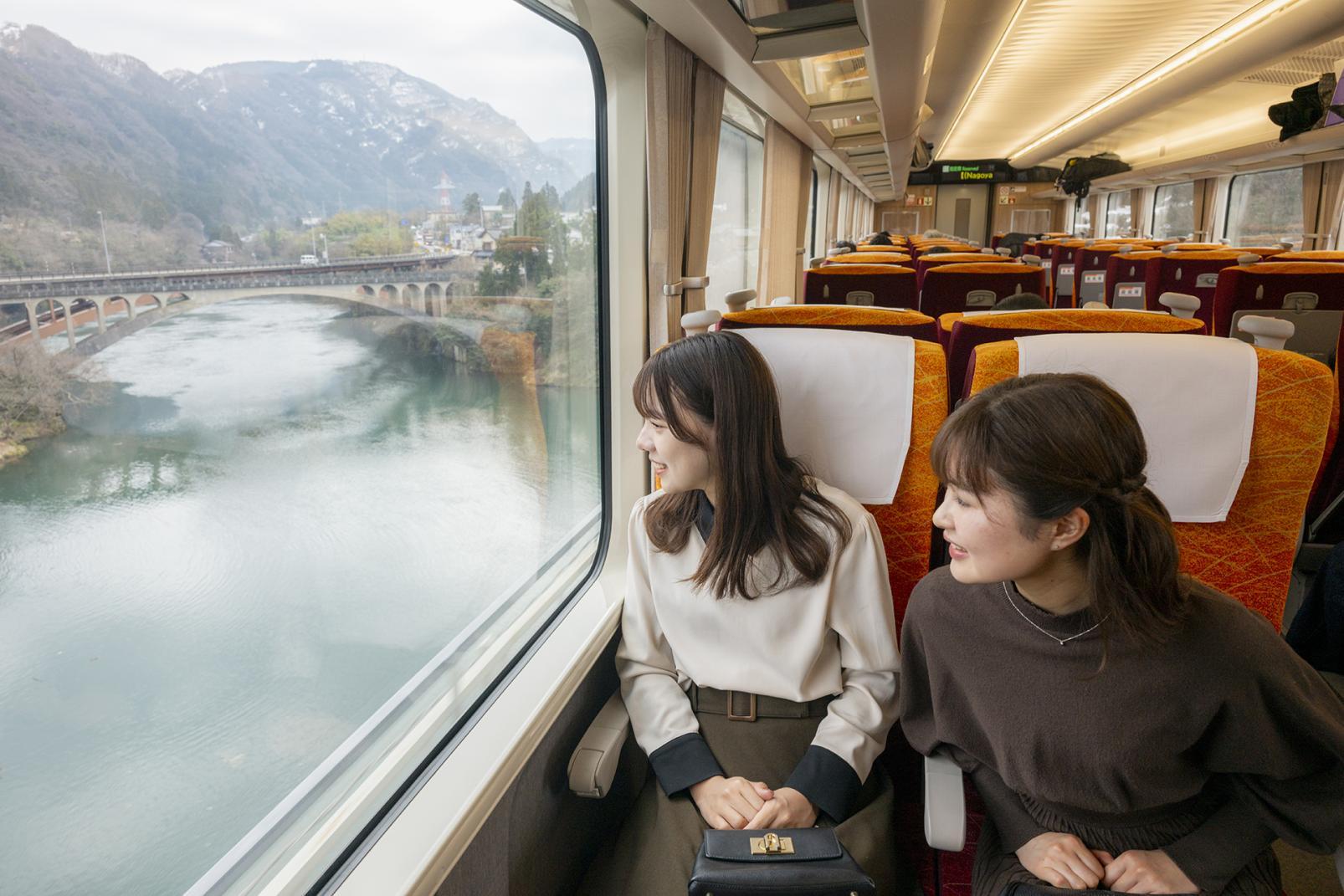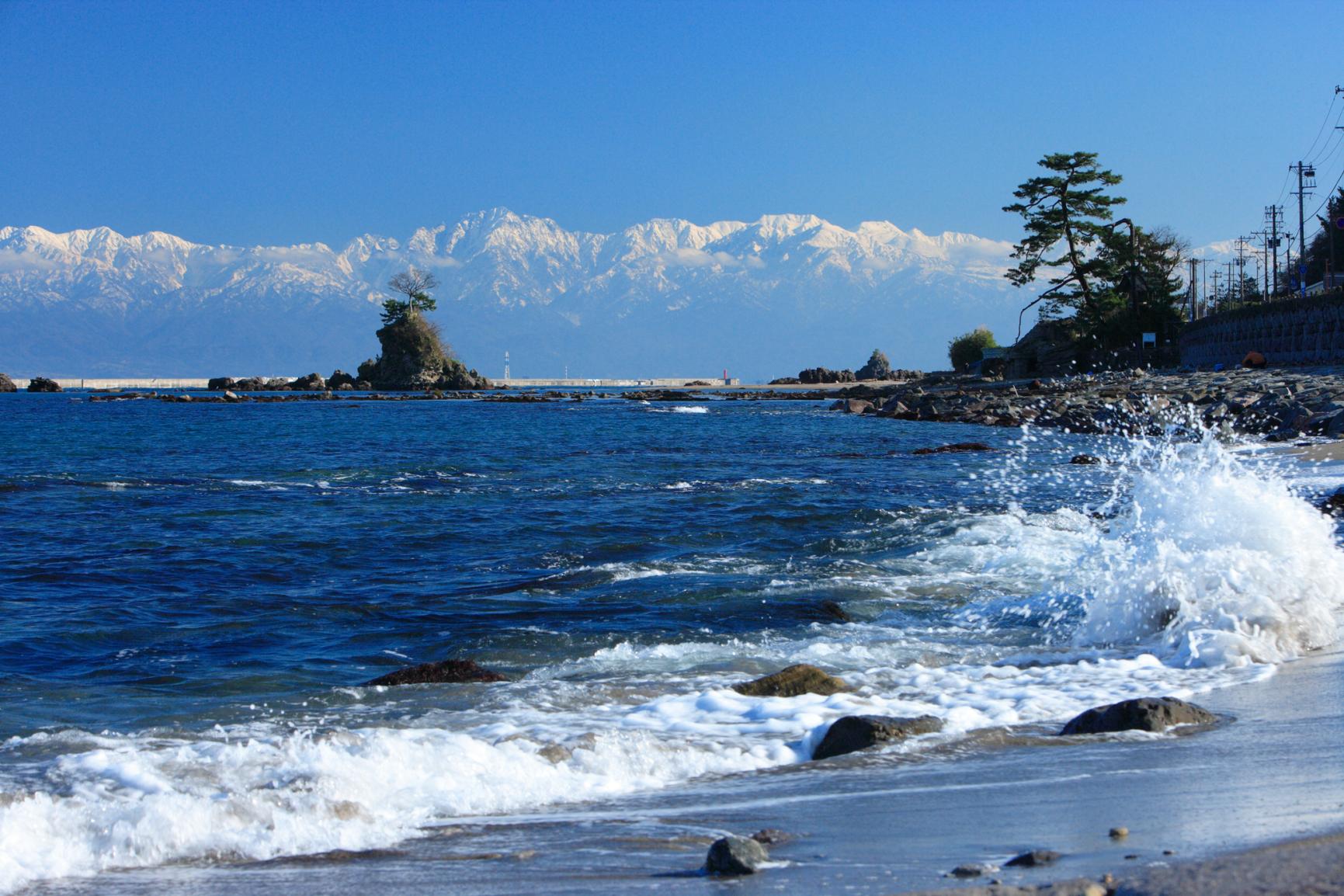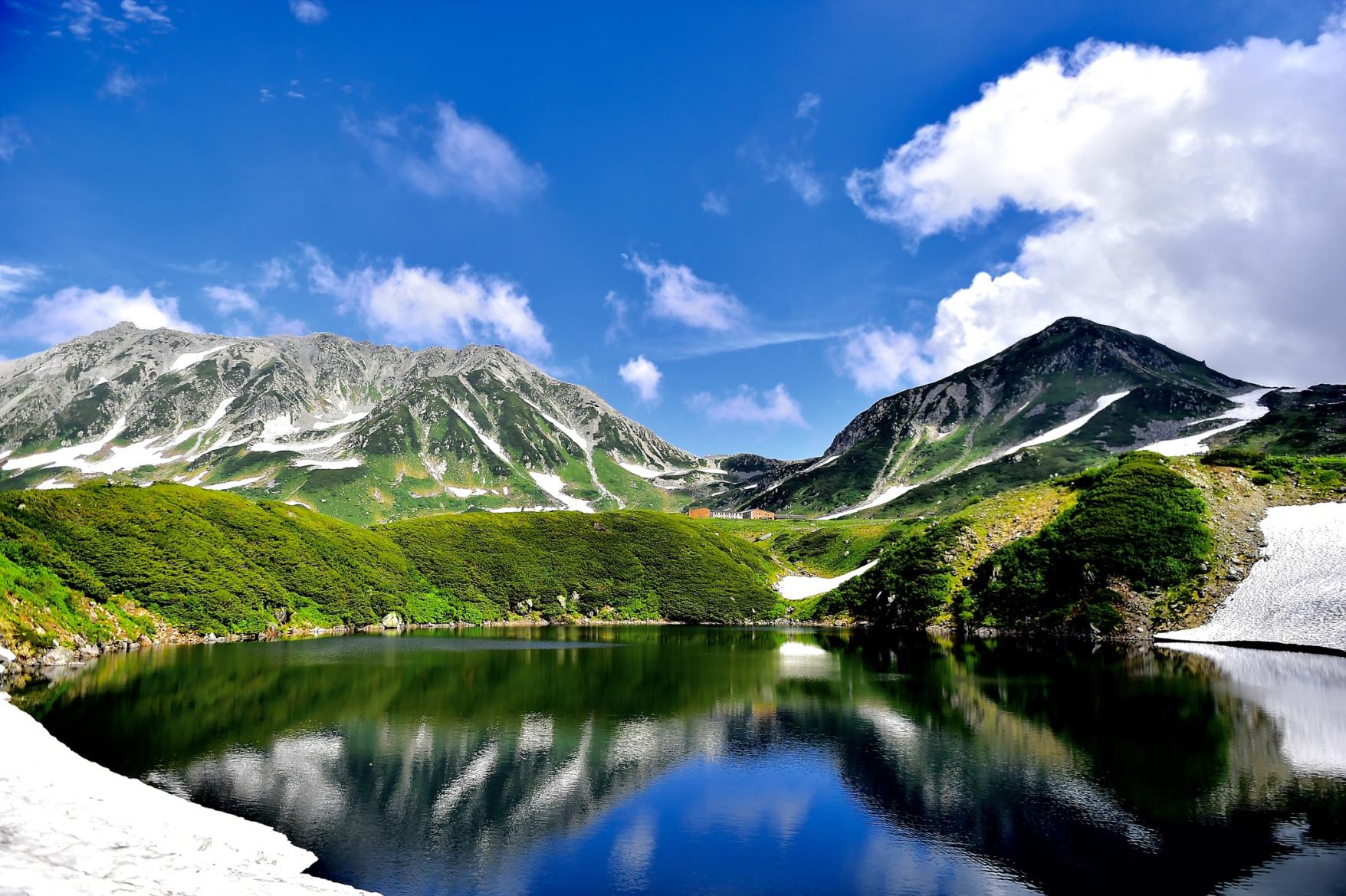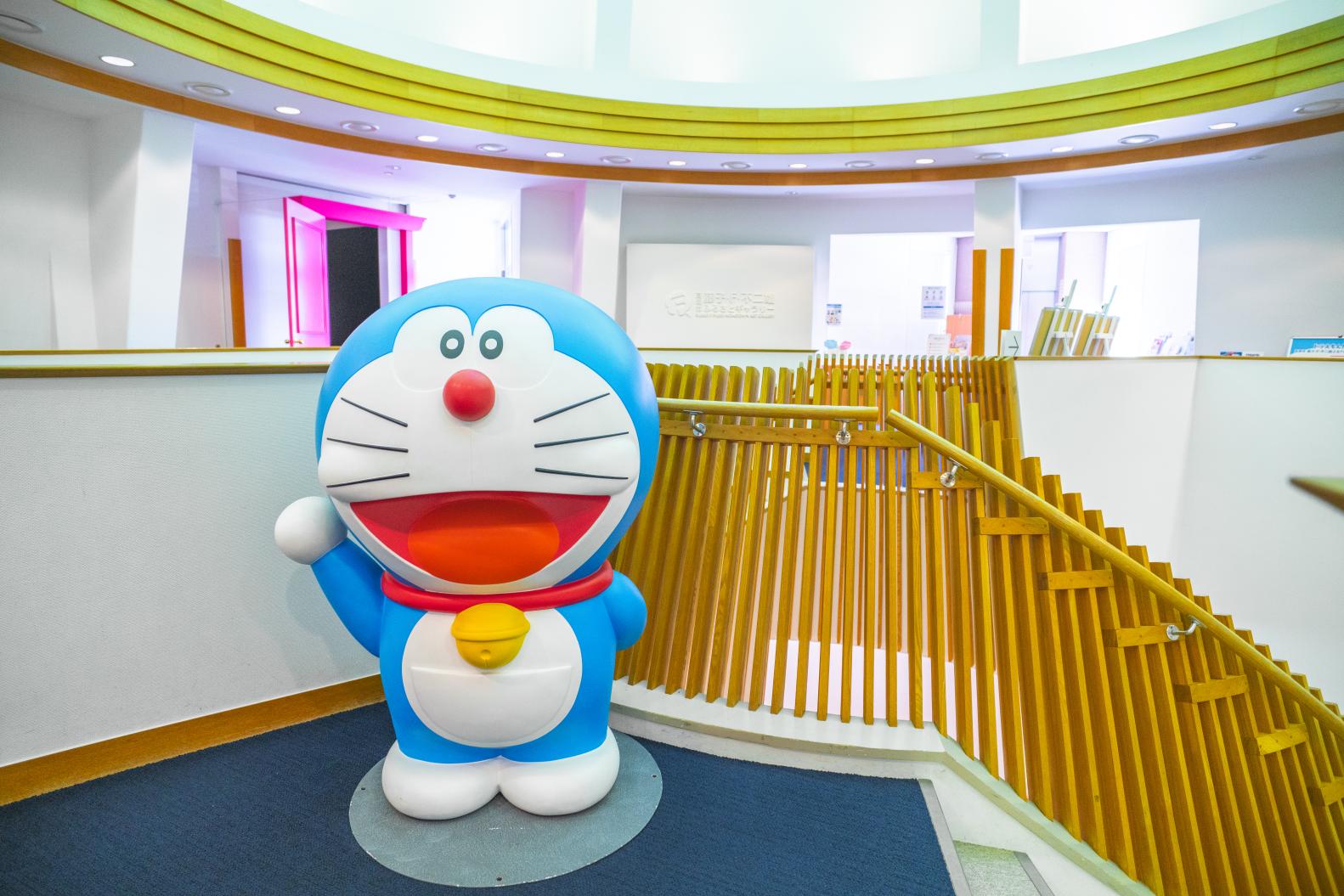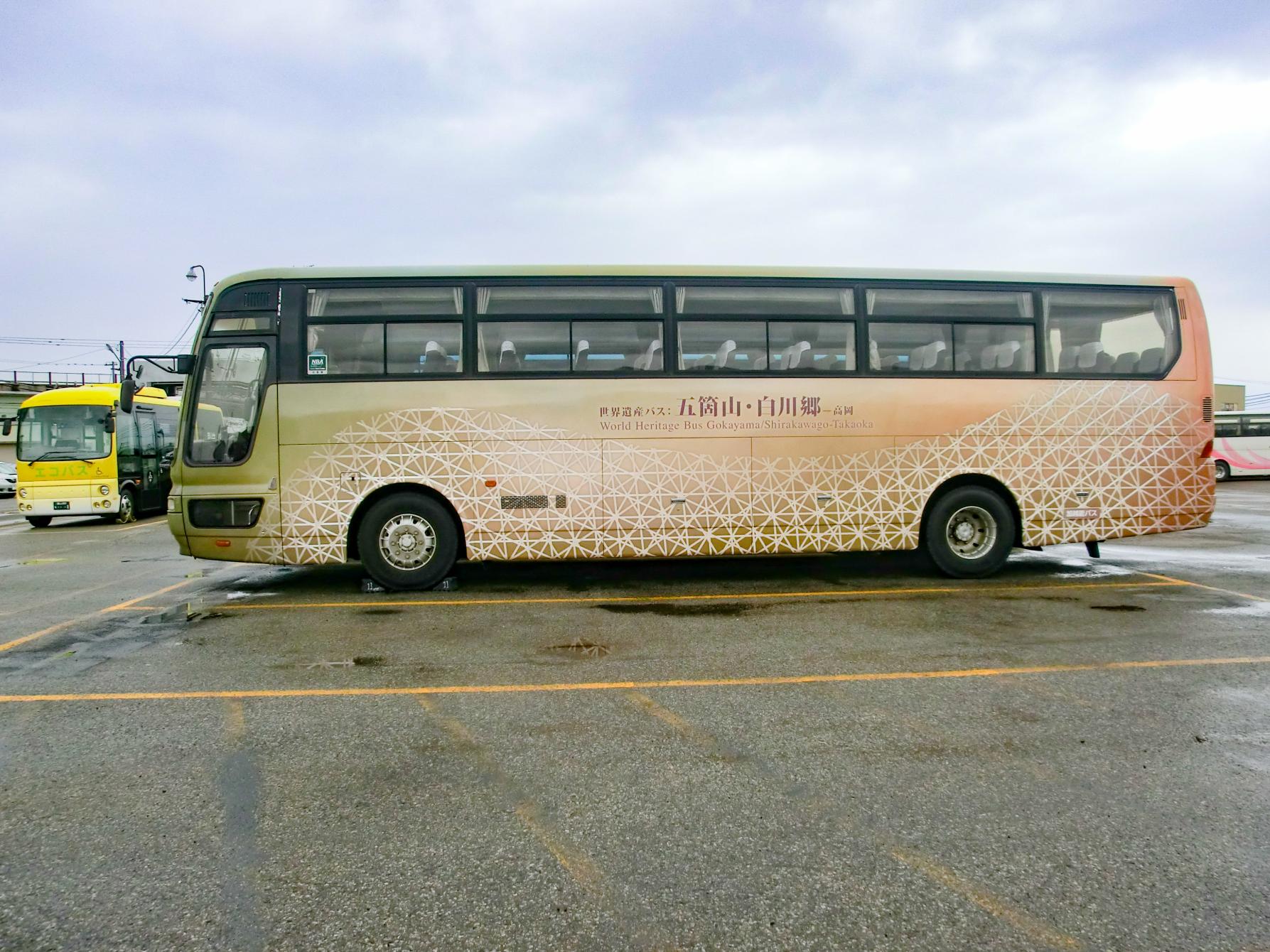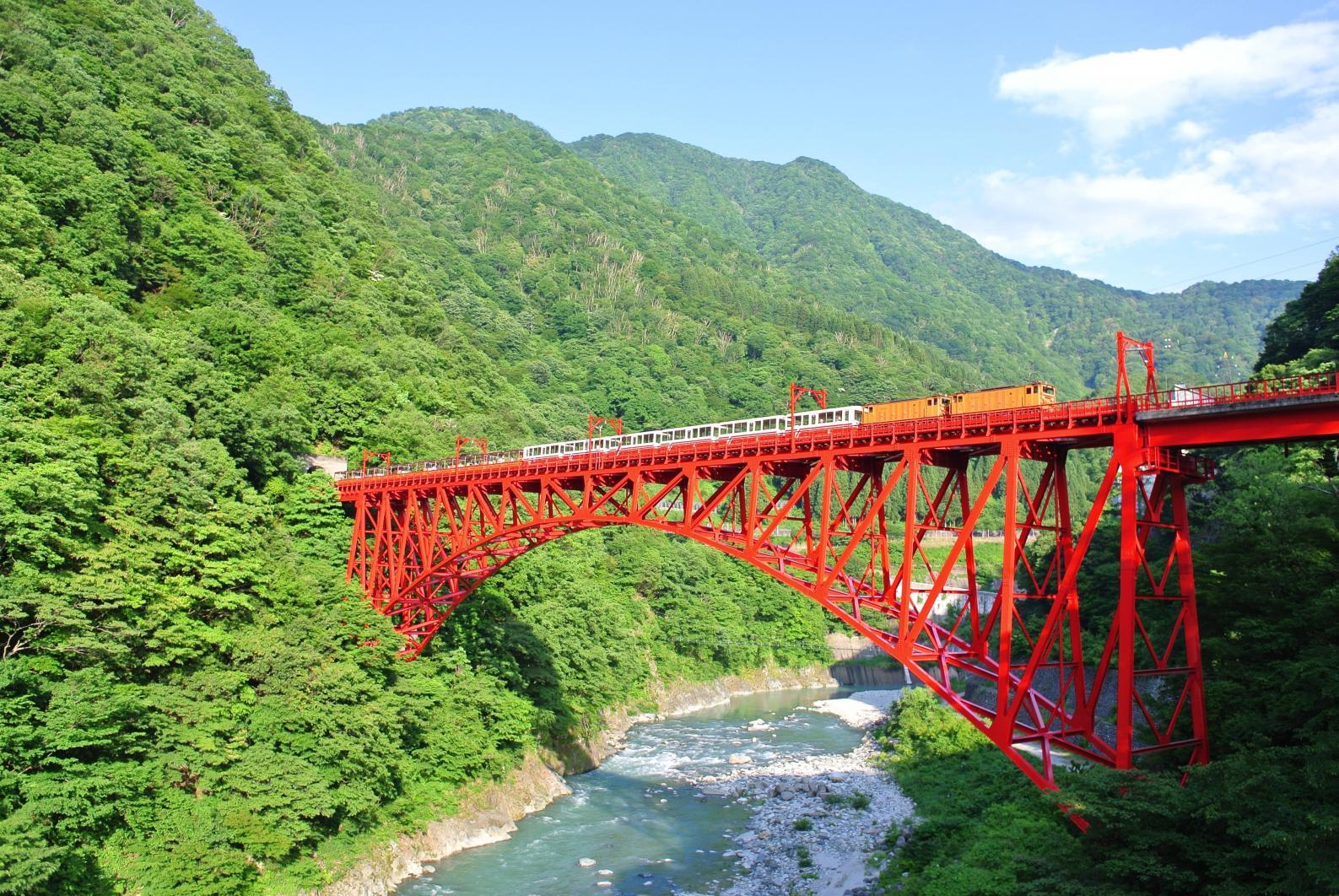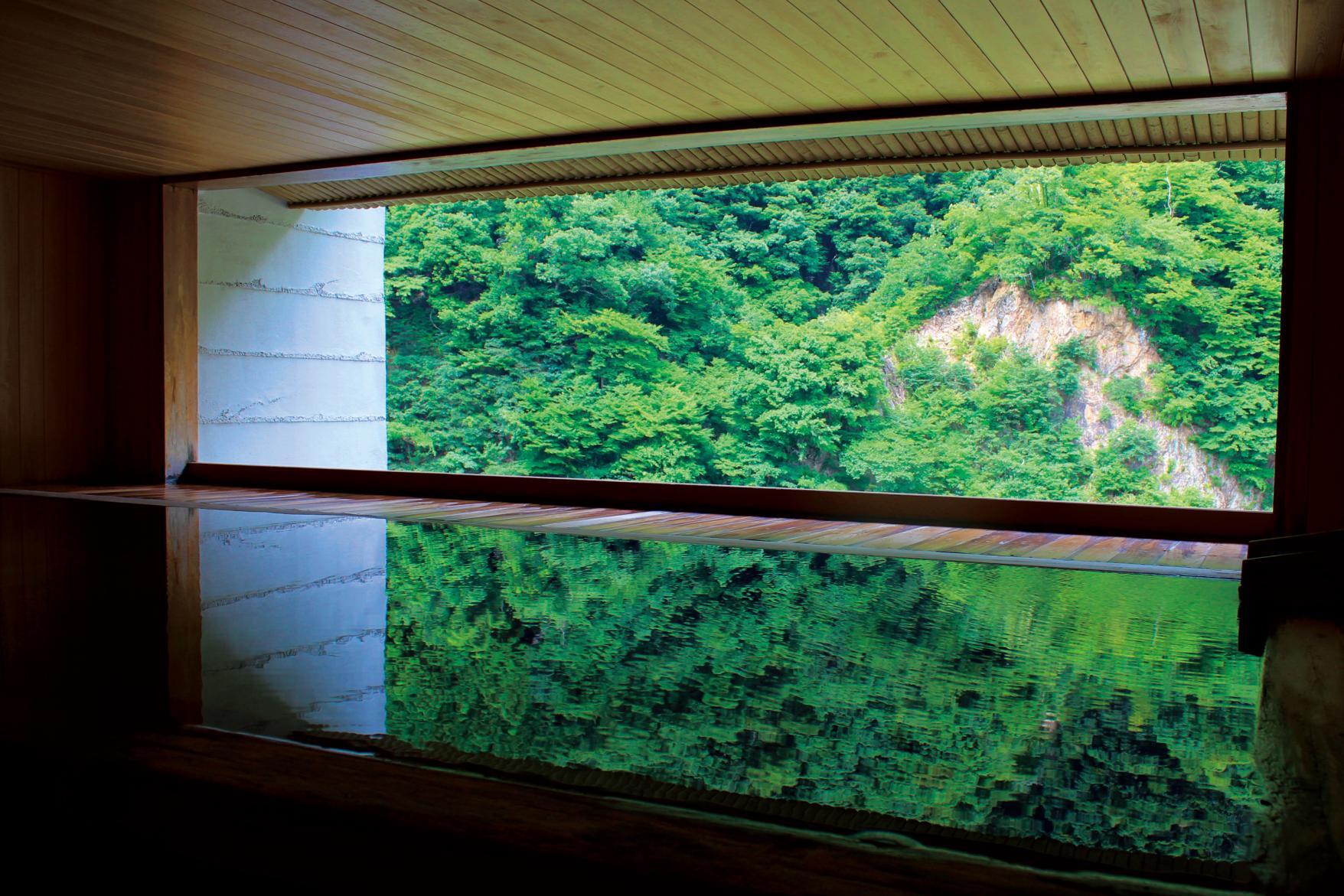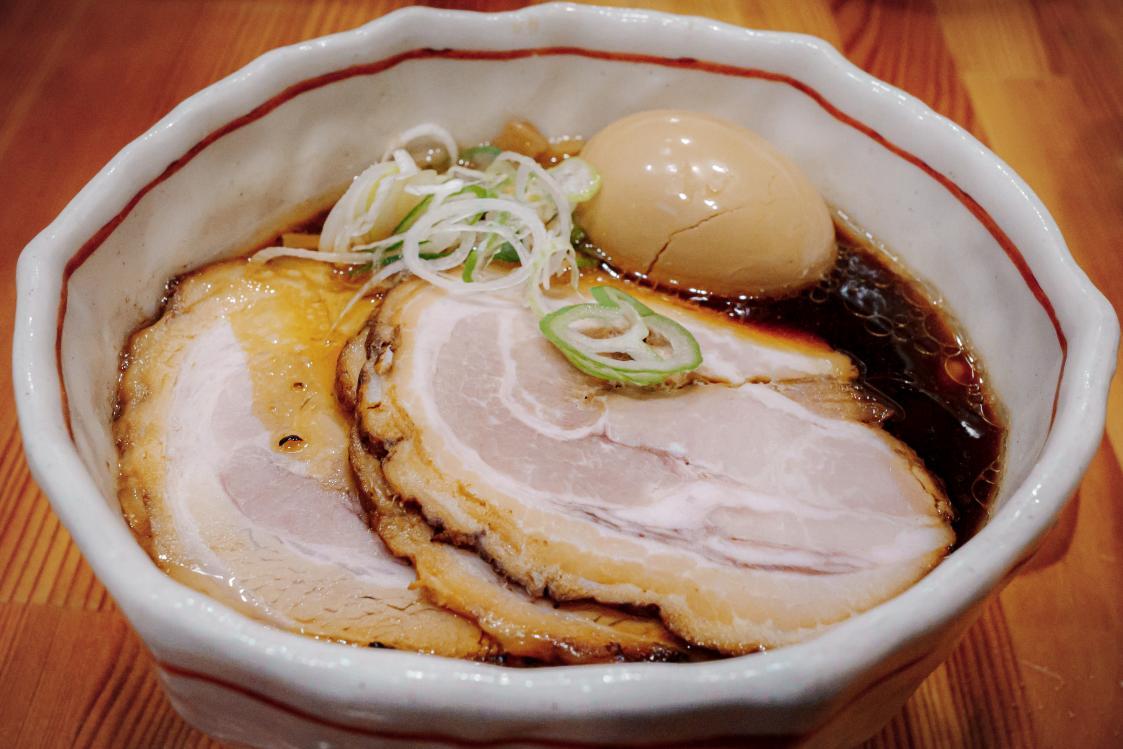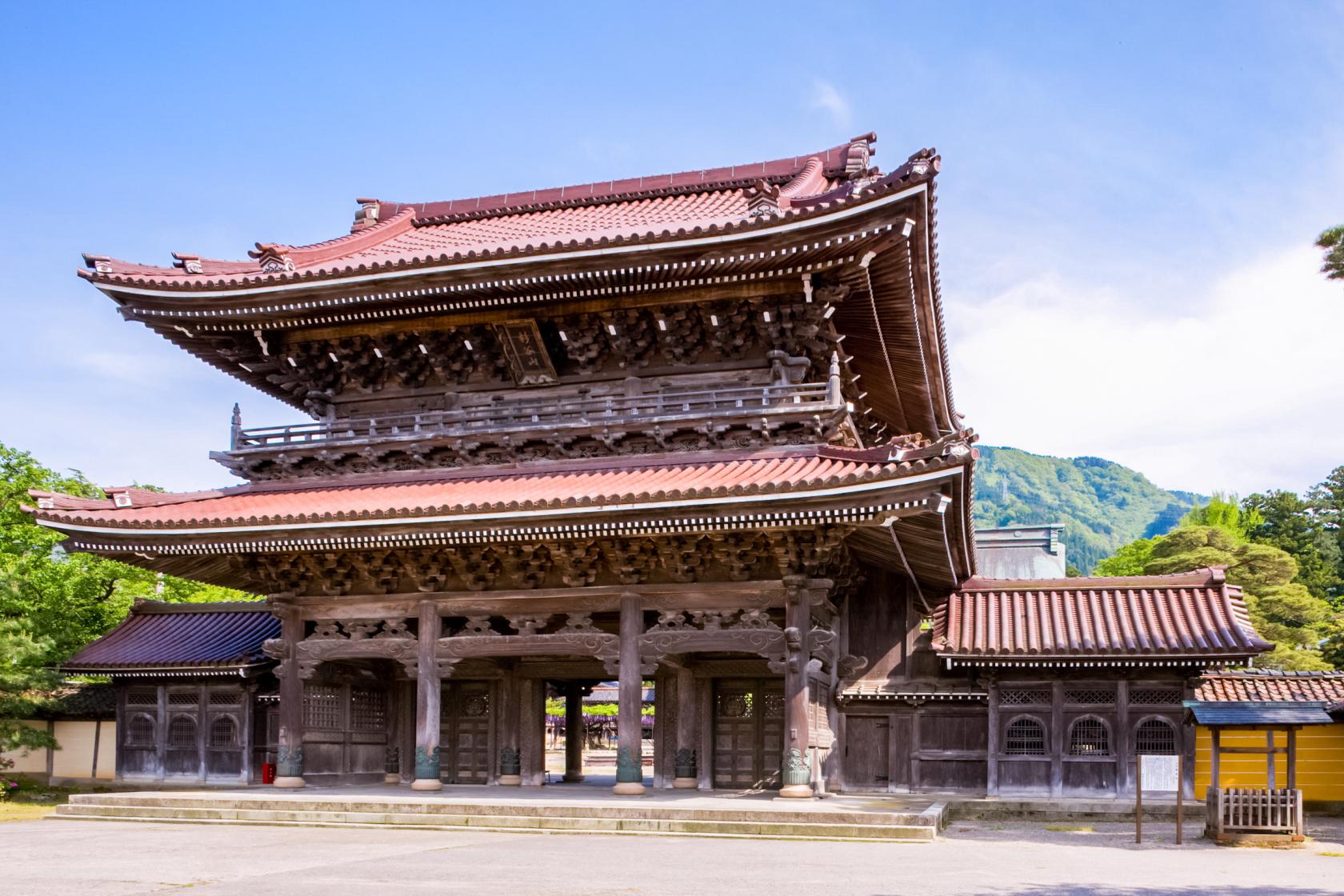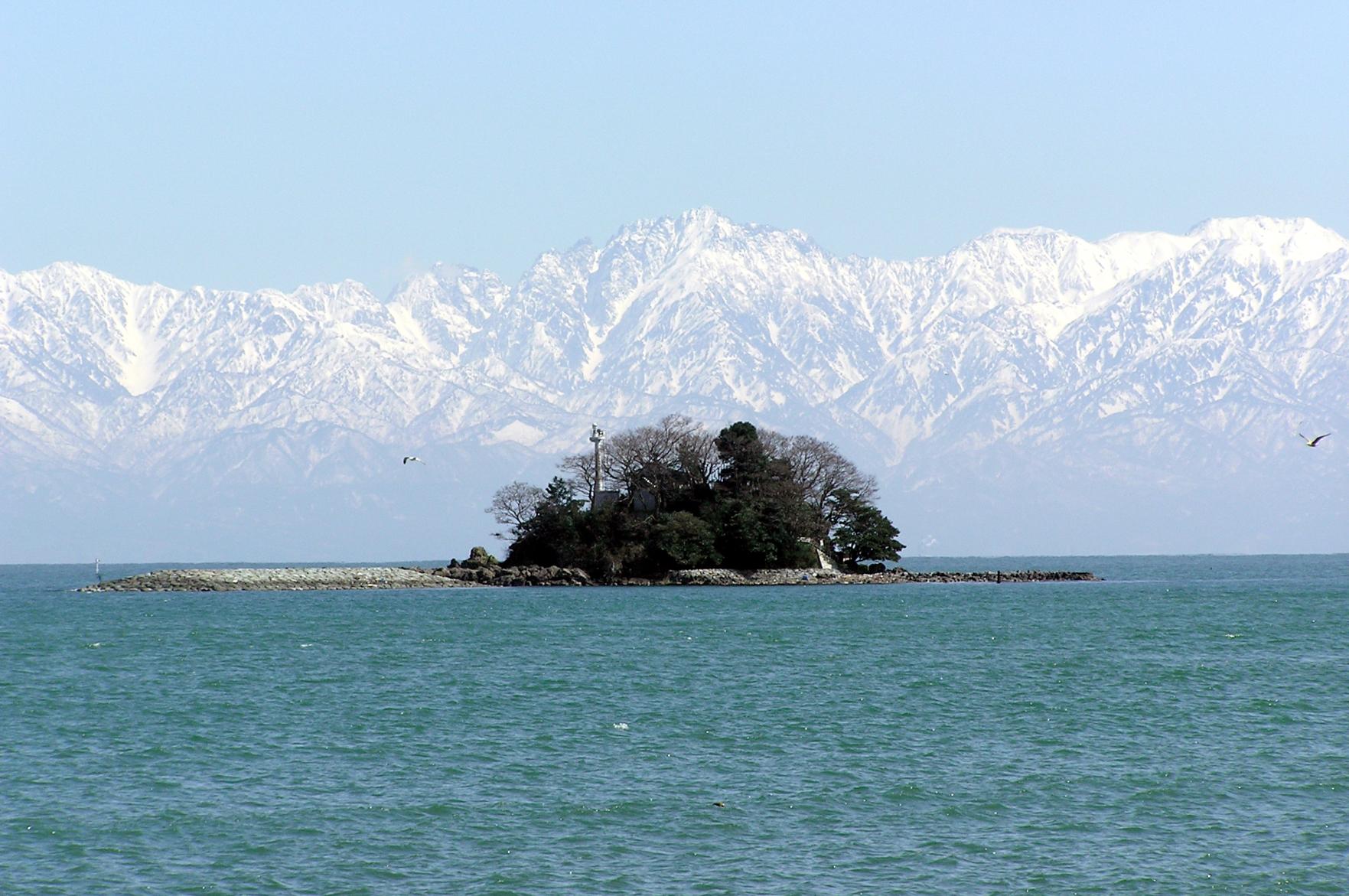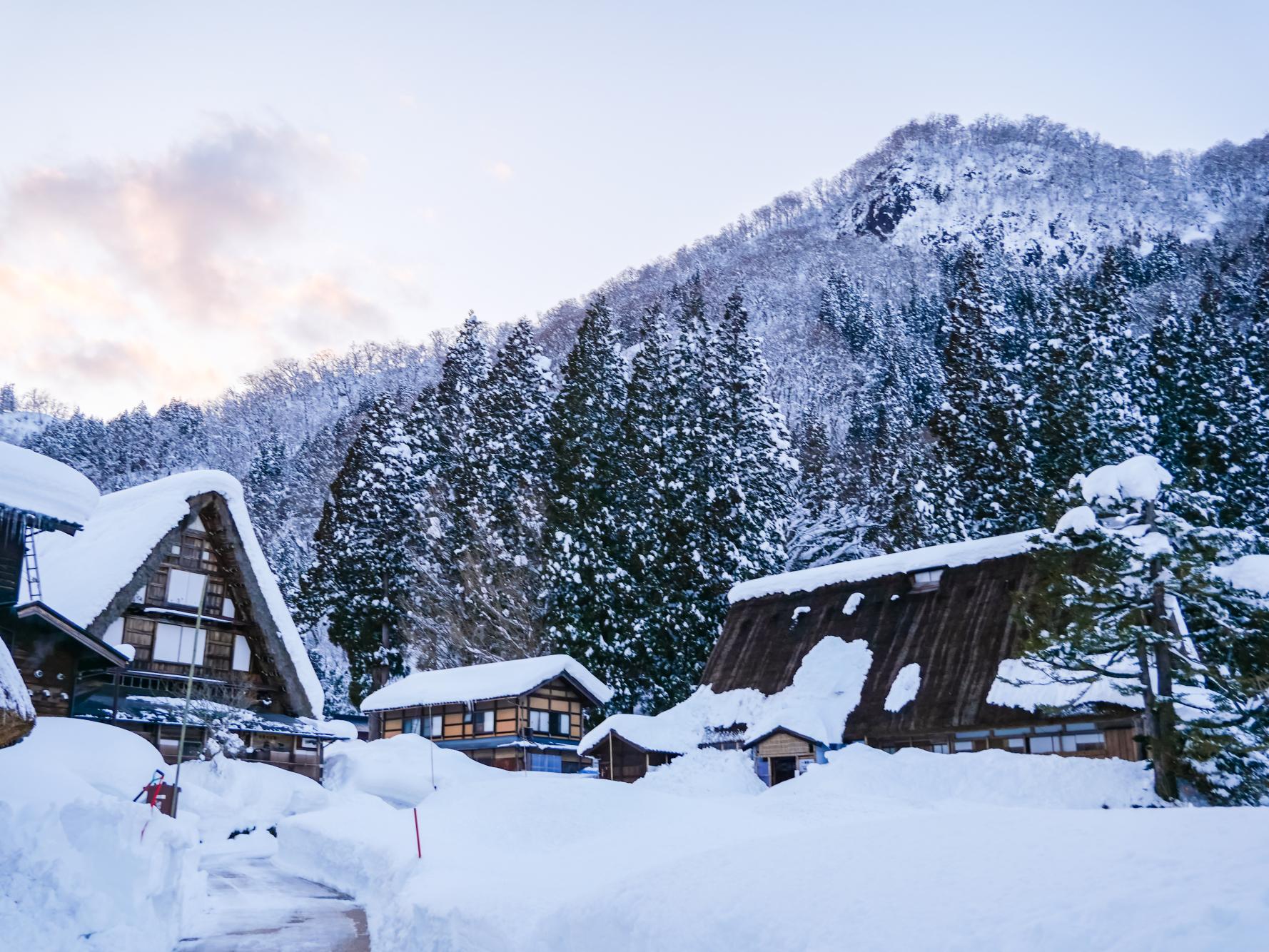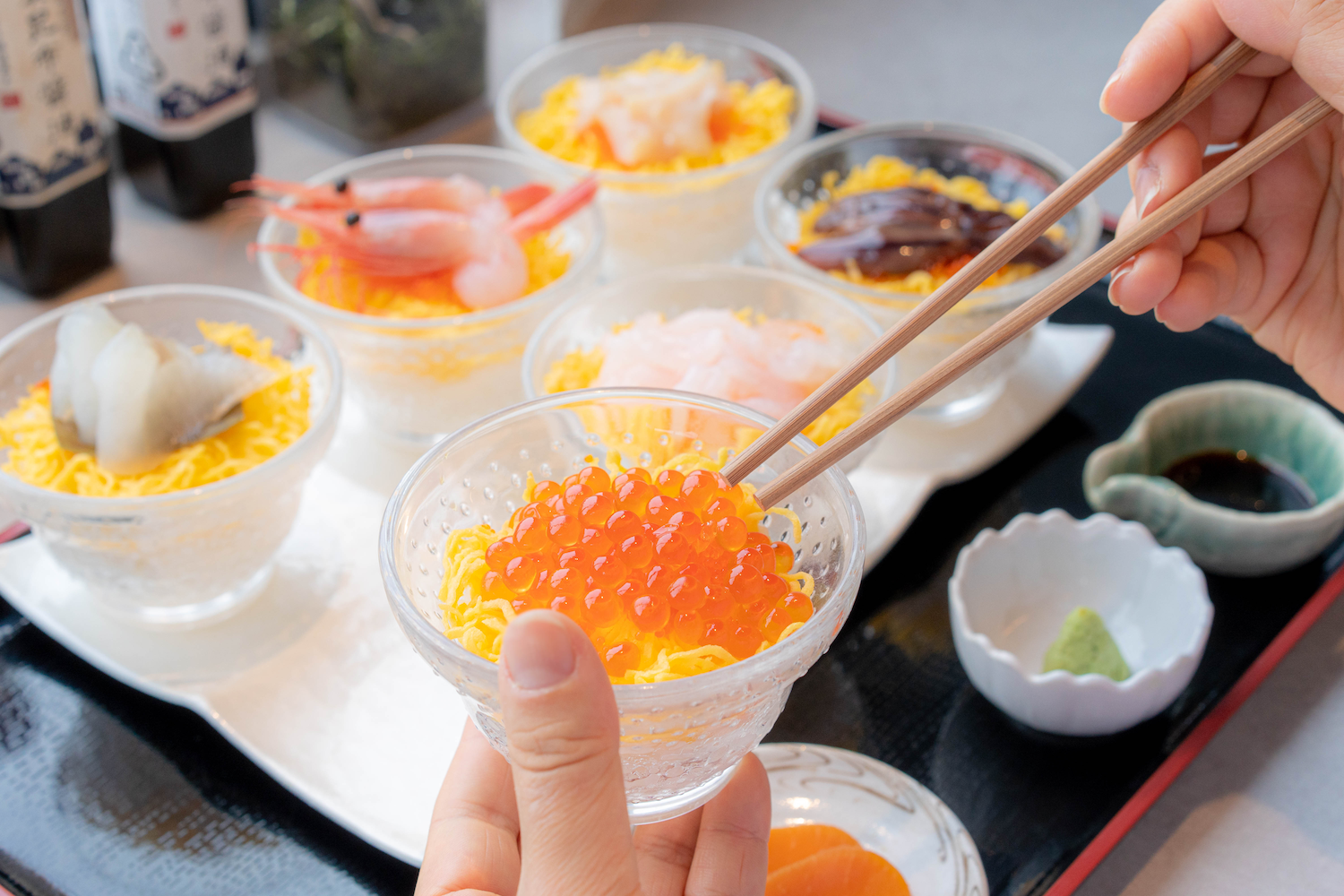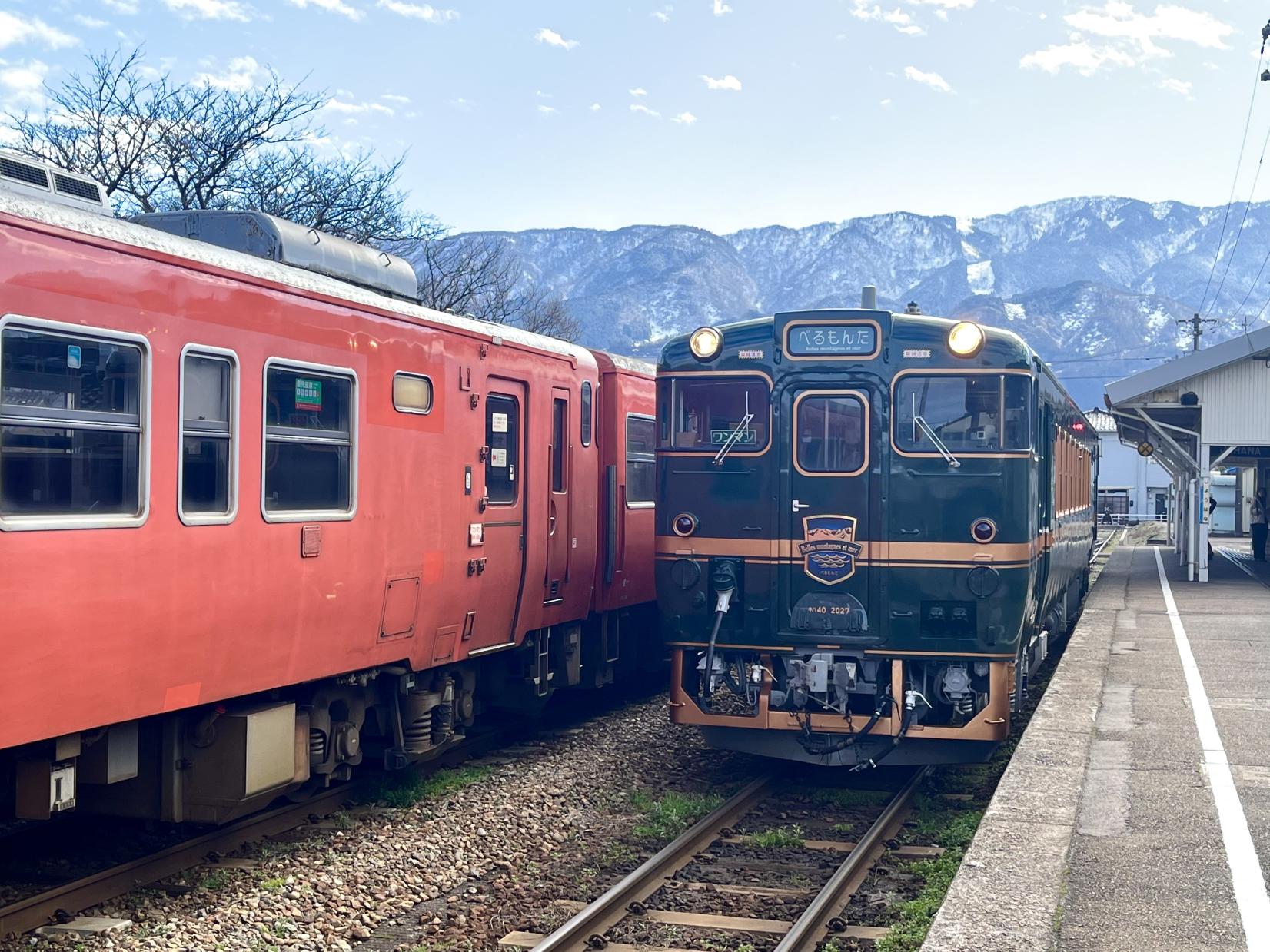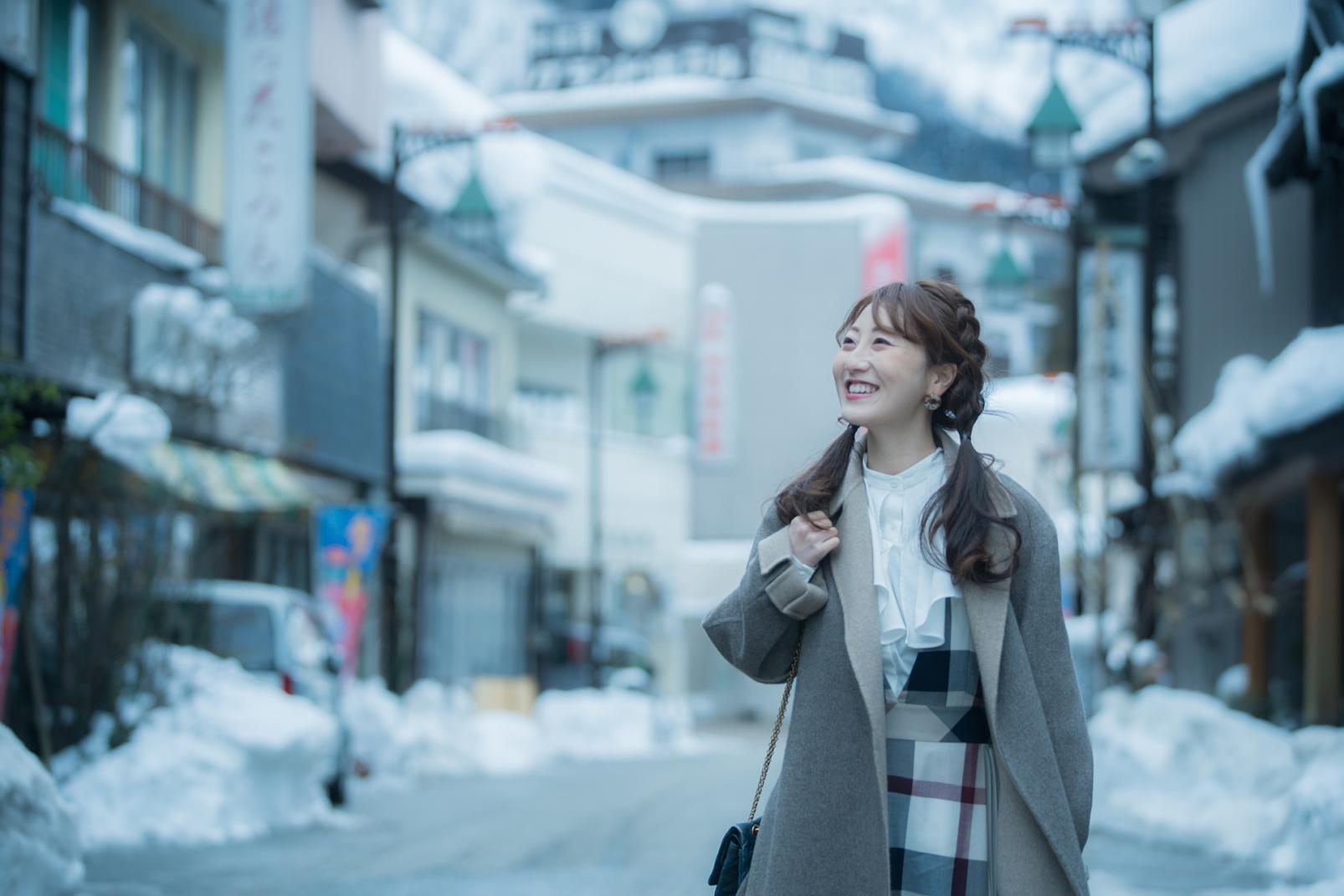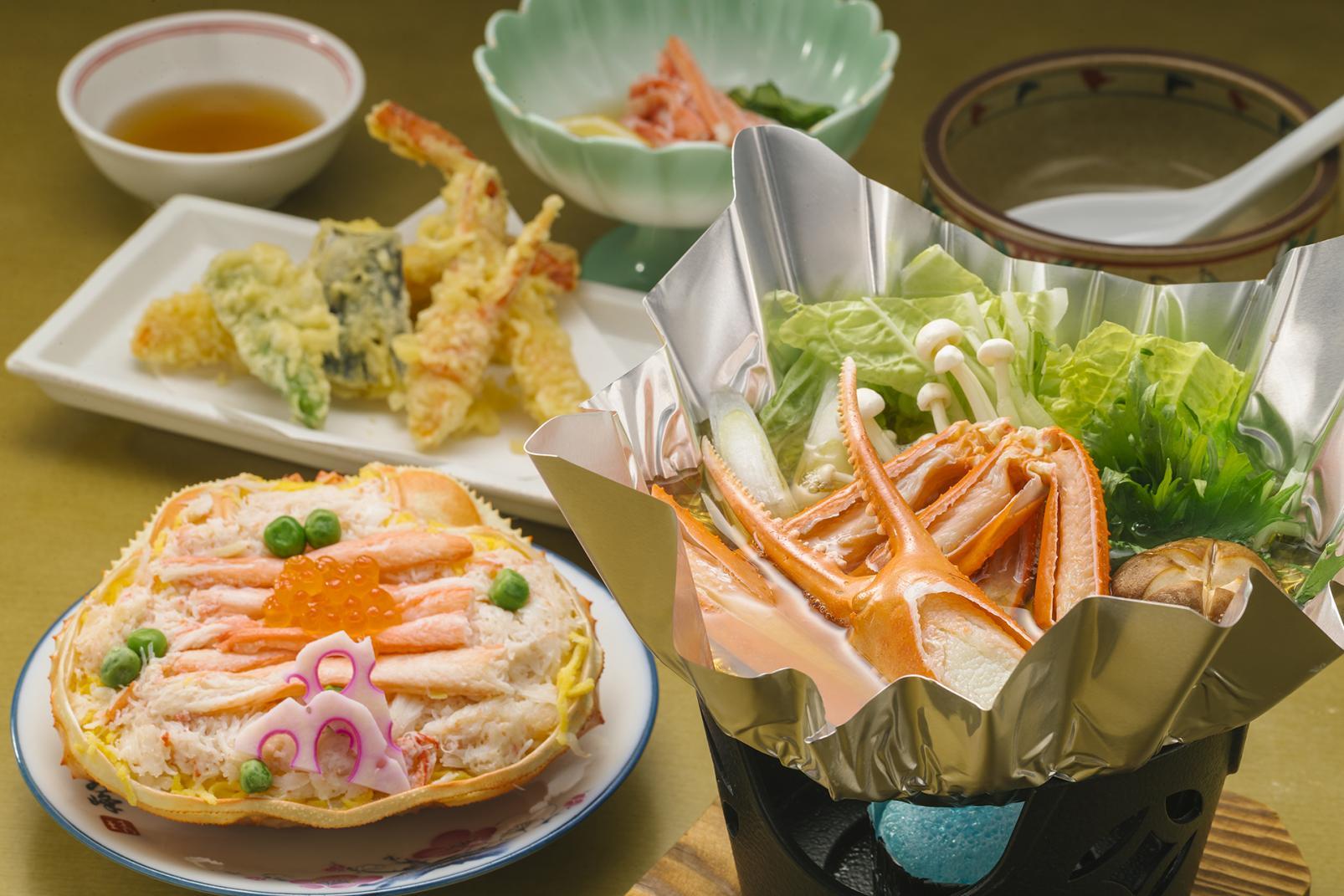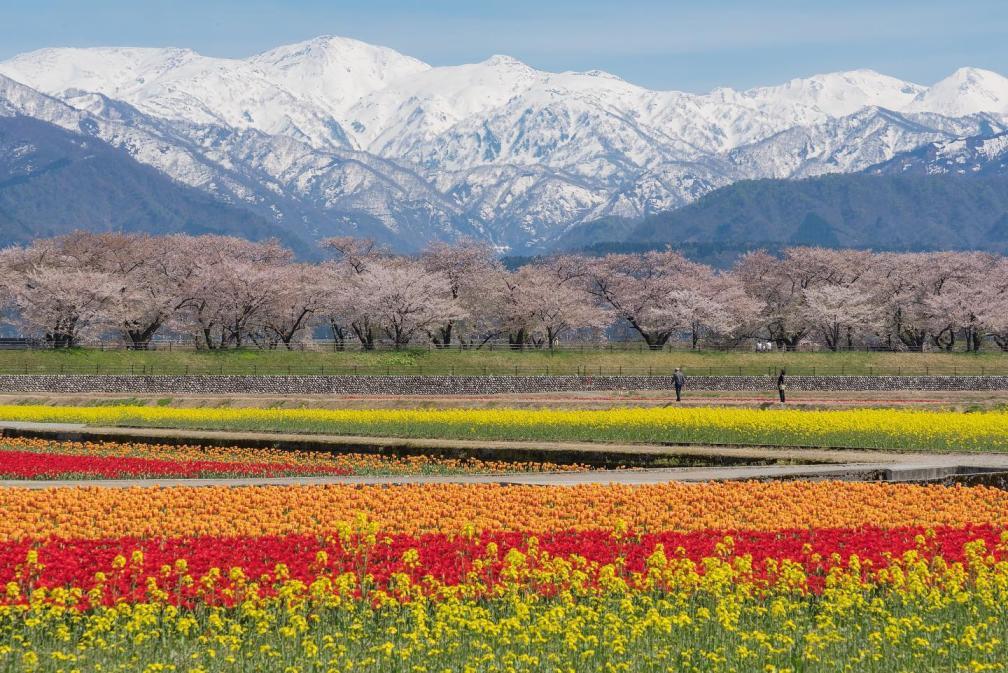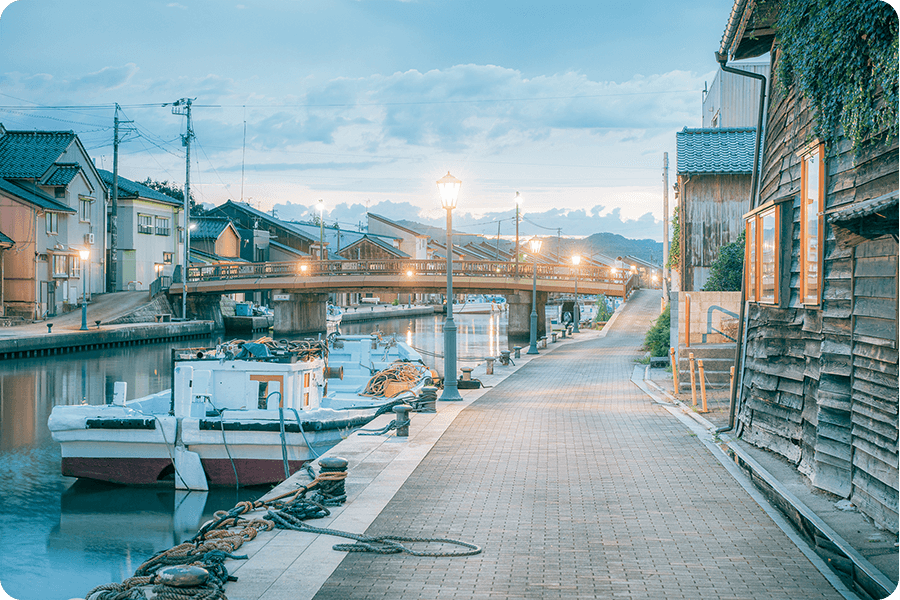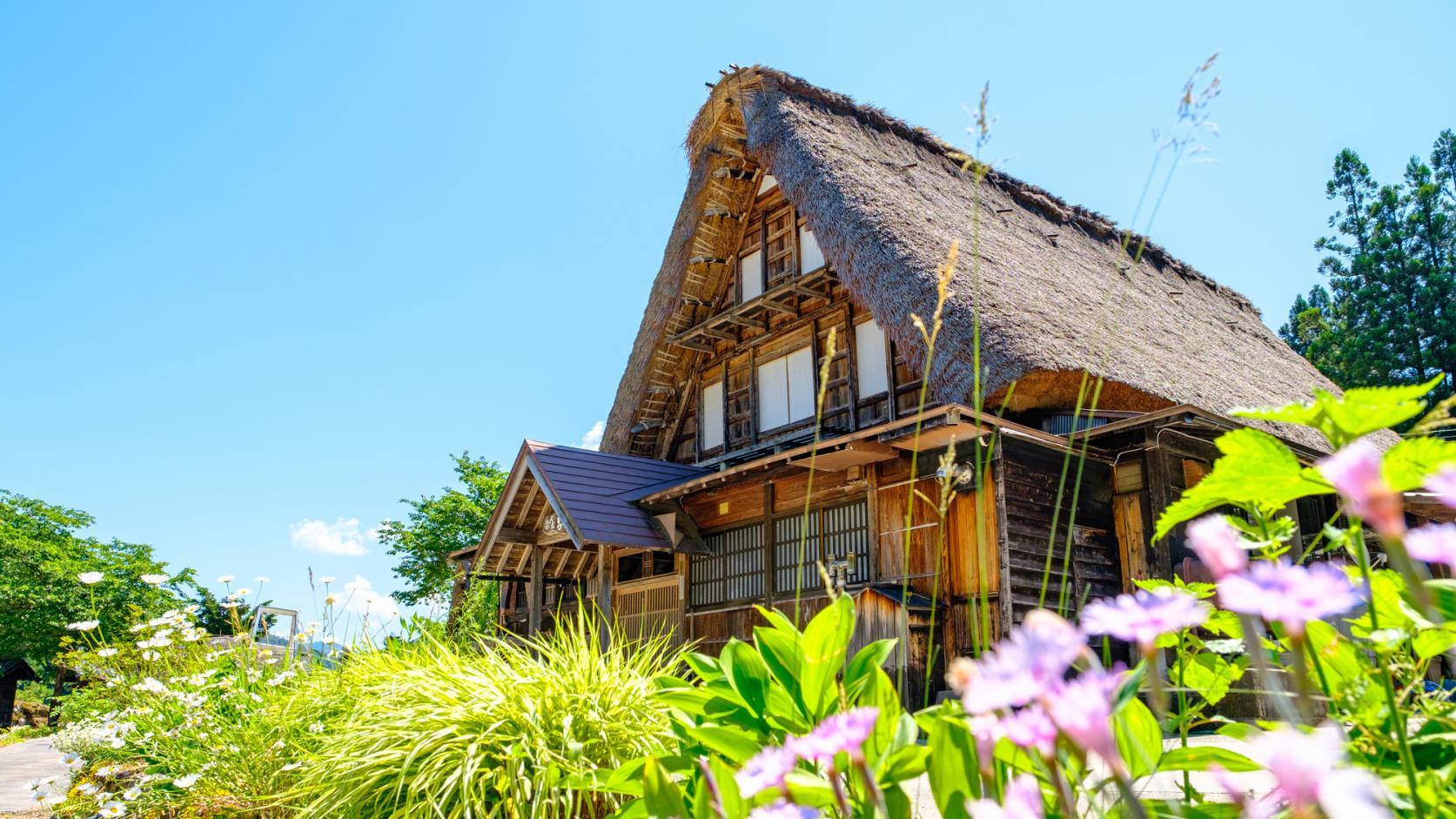
Tour of Toyama's Representative Temples
This article takes you through three temples representative of Toyama Prefecture: Zuiryuji Temple, Shokoji Temple, and Zuisenji Temple. Buildings with various backgrounds and rich histories are introduced here.
Zuiryuji Temple, a Treasure Trove of National Treasures and Important Cultural Properties
Zuiryuji Temple is located in Takaoka City, Toyama Prefecture, and is a designated National Treasure of Japan. It was founded by Toshitsune Maeda, the third head of the Maeda clan and the second daimyo of the Kaga domain. It was built to mourn Toshinaga Maeda, the second head of the clan and an important figure who founded Takaoka. The three main buildings, the Buddhist worship hall, the lecture hall, and the temple gate, are representative of early modern Zen-style architecture and were designated as National Treasures in 1997.
The approach leading to Zuiryuji Temple stretches for 870 meters and is lined on both sides by more than 100 stone lanterns. Along the way, there is a bronze statue of Lord Toshinaga Maeda, who is something of a character of Takaoka City. Since he was an important figure in the founding of Takaoka, his image can be seen all over the city.
As you walk along the approach, Zuiryuji Temple eventually comes into view. When you pass through the main gate, you will see the temple gate, which is full of history, and two impressive Nio statues. The path from the main gate to the temple gate is lined with white gravel on both sides designed in a beautiful sand pattern. Then, there’s a straight path from the main gate to the lecture hall, and a corridor runs around the periphery of the temple.す。
After visiting the shrine, we went around the corridor. Perhaps it was because we visited during the winter, but the corridor felt more solemn and quiet. The symmetrical corridor surrounding the Buddhist temple has been designated as an Important Cultural Property.
The Sanmon Gate, the Butsuden Main Hall, and the Hatto Lecture Hall are arranged in a straight line, while the Zendo (Zen meditation hall) and big monastery kitchen are placed on the left and right. In addition, the structure of the temple, which connects the four circumferences with corridors, is beautiful. Zuiryuji Temple, which has many items designated as Important Cultural Properties, including the temple gate, Buddhist temple, and the lecture hall of the temple, which are designated as National Treasures, is worth seeing.
After enjoying Zuiryuji Temple, there is a Kirin Chaya near the reception desk, perfect for filling your stomach. It would be nice to take a breather and calm down after visiting the shrine while enjoying Kirinyaki and drinks here.
The Azuki Kirinyaki is freshly baked, warms your cold hands, and is a blissful dish for winter. The fragrant azuki beans are just the right amount of sweetness and bring out the original flavor, making them an excellent product. Please give it a try.
Shokoji Temple, Where the Seven Wonders are Conveyed
Shokoji Temple, located in Takaoka City, was founded over 500 years ago in Tsuchiyama, Nanto City (similar to the national treasure, Zuiryuji Temple), and was later moved to Takakubo, Nanto City and Suetomo, Oyabe City. This temple belongs to the Jodo Shinshu Hongwanji-ha which was founded in 1584 in what is now Fushiki Kokokufu, Takaoka City. After coming to this area, the precincts were maintained under the patronage of the Maeda family of the Kaga domain. It has been faithfully reproduced to match its original appearance.
There are seven wonders within the temple grounds that have been passed down since ancient times.
When you pass through the Chinese-style gate, there are huge stones on your left and right. This is known as "the stones that fell from heaven," one of the seven wonders. If you hit the small pebble atop the rock, the resonating sound is not dull, but instead like that of hitting metal! It’s a truly strange phenomenon.
As you continue to go deeper, a large ginkgo tree is planted on the right. This ginkgo tree does not bear fruit and, for this reason, it is called the "Ginkgo Tree Without Fruit.''
A long time ago, unfavorable incidents, such as fights over the ginkgo fruit and children getting injured climbing trees, occurred, so the chief priest prayed that the ginkgo trees would stop bearing fruit. As such, the ginkgo tree stopped producing fruit the following year and still does not produce fruit to this day.
These seven wonders such as these within the precincts, so be sure to look for them.
When you get to the front of the main temple building, you will see a large triangular snow cover. It snows a lot during the winter, making the roads slippery, so please be careful when visiting.
The main hall, also a national treasure, is an impressive and majestic wooden structure. The craftsmanship shines through the detailed carvings and other decorations. In addition, when the wood roots, only the rotten part is cut out and repaired to preserve the original appearance. When you look down, you’ll see the hollowed-out parts that have been repaired, in curious gourd shapes. Please look for them.
re two huge candles about three meters high, and they are said to have been placed in preparation for the memorial service for the anniversary of Shinran’s, the founder of Jodo Shinshu Buddhism (Shin Buddhism), death. It’s believed that they kept getting bigger and bigger since the Meiji period, as local villages competed with each other for the size of the dedication.
When you exit the main hall and turn left, you will find the head priest’s chambers, and which served as the monk's residence at the time.
When you enter the main hall and head towards the back, you will find the Upper Room. It is said that at that time, the emperor's messengers sat in the Upper Room and met with the chief priest. Because it is a highly prestigious and sacred space, it is fenced off and inaccessible, but you can see it from over the fence. There are other spaces such as the kitchen, the study, and inner study. The inner study is a space that was used as the chief priest's living room, and it is also called the Golden Room as it is completely covered in gold wallpaper.
On sunny days, sunlight shines through the shoji screens and reflects off the golden wallpaper, creating an even more elegant space. During the morning hours as the sun shines in from the west sun, the atmosphere of the room changes, making it a wonderful space no matter the time of day. Various cultural properties and reproductions are on display within the temple grounds, allowing you to learn more about them
.
If you are interested in the history, religion, and culture of Takaoka City, why not come and learn for yourself?
Zuisenji Temple, Featuring Japan's Best Wood Carving
Next, we will visit Inami Betsuin Zuisenji Temple in Nanto City.
Inami is known as a town of wood carvings, and, as such, wood carvings are scattered throughout the town. Zuisenji Temple, located at the end of Yokamachi Street, is the birthplace of Inami carvings, and you can see said carvings in impressive detail.
The current main hall was built over 600 years ago and rebuilt in 1885, so it is one of the largest wooden temples in Japan and one of the largest wooden temples in the Hokuriku region.
The first thing you’ll see is the large and magnificent front gate made entirely of zelkova, featuring impressive wood carvings that are a sight to behold. When you enter the temple grounds, the main hall draws you from across the spacious grounds. The main hall has a solemn atmosphere, with a variety of Inami wood carvings and sculptures – said to be the best in Japan – adorning every corner. These wood carvings and sculptures showcase the Inami craftsmanship in every detail.
Then, from April to May, the wisteria flowers on the grounds bloom, and you can see the beautiful wisteria. The combination of the temple and wisteria flowers creates a fantastic atmosphere, somehow becoming even more beautiful and captivating for visitors.
Many people come from all over to see Inami Betsuin Zuisenji Temple, where you can see skillfully made carvings everywhere. The temple is decorated with dragons, lions, and various other impressive carvings, so please take a close look.
The three temples we introduced this time are designated as National Treasures and Important Cultural Properties and are full of attractions. So, if you are interested in history, Japanese culture, and sculpture, why not come and visit?
One of its charms is that you can enjoy different expressions in spring, summer, fall, and winter.



